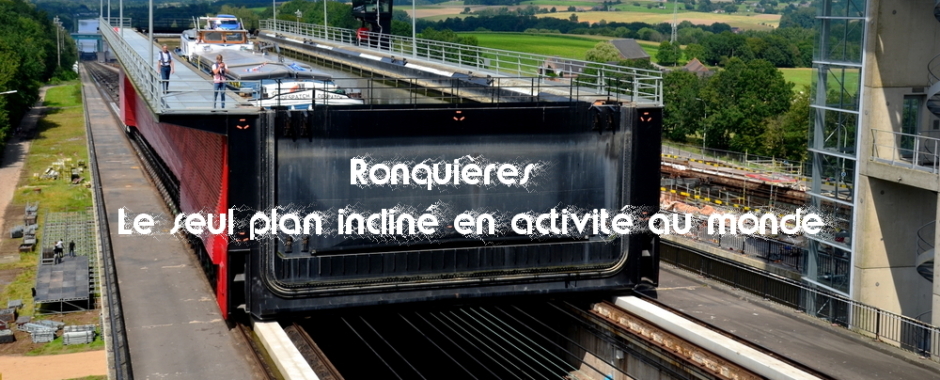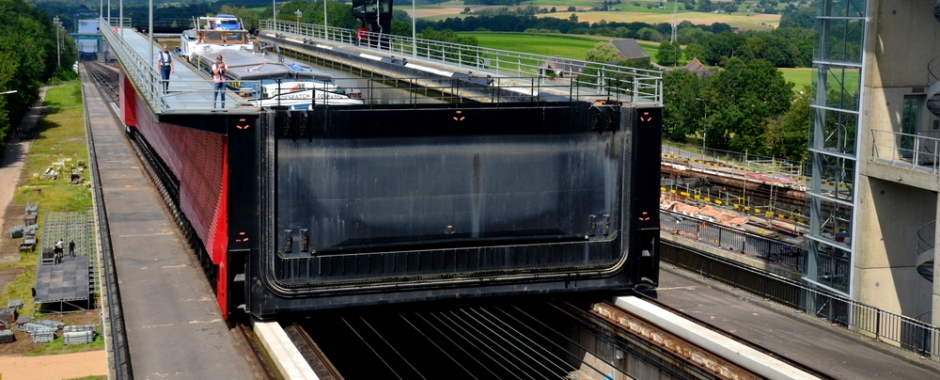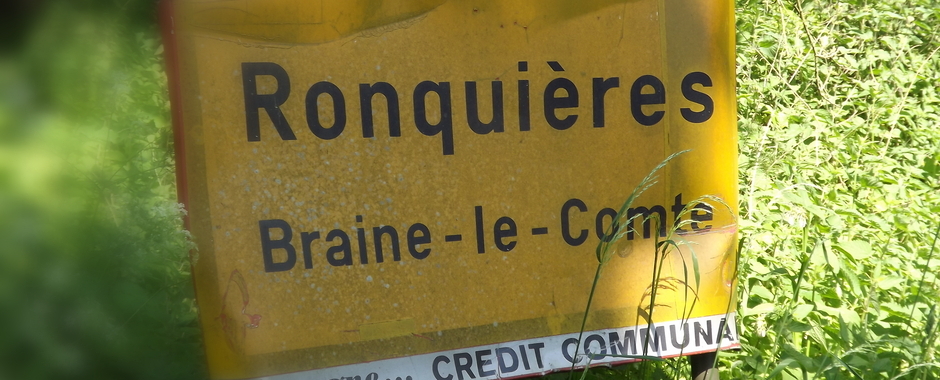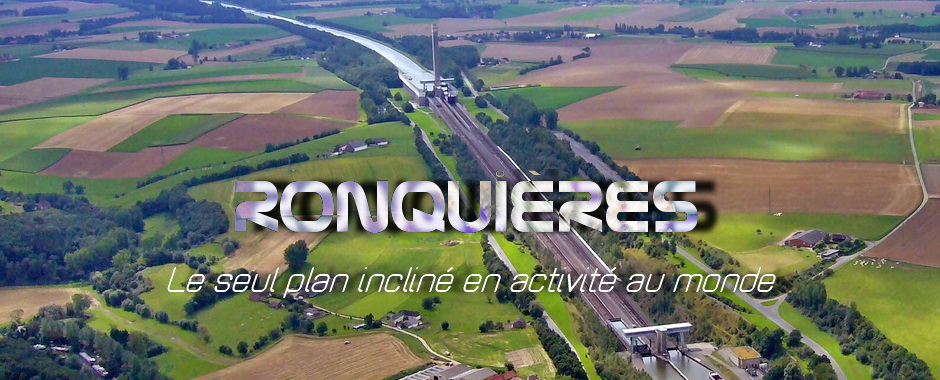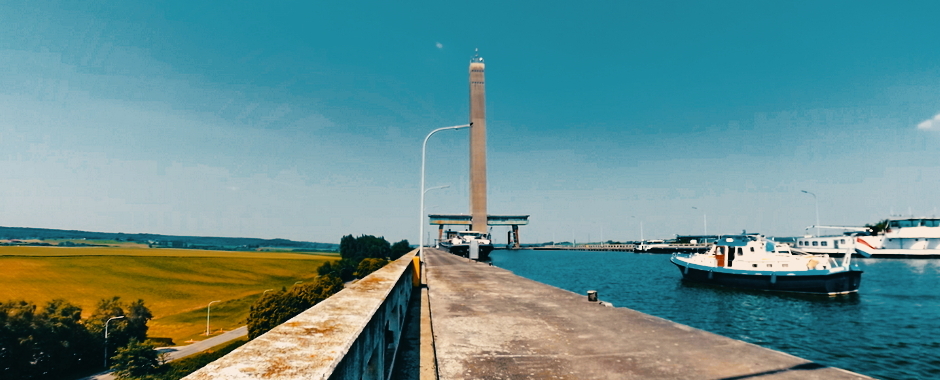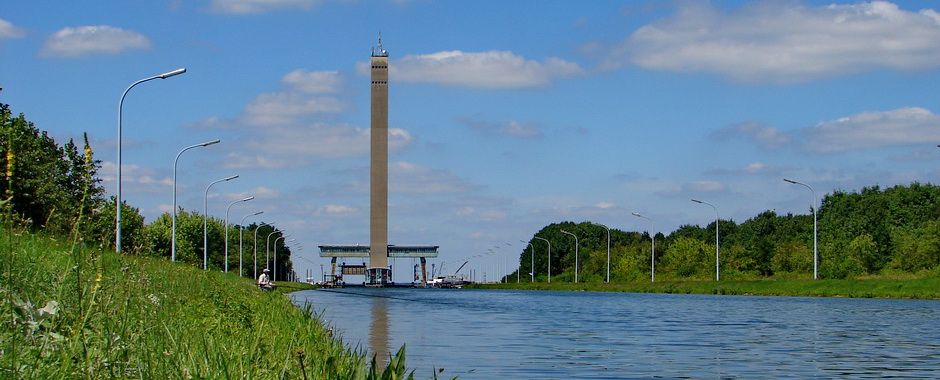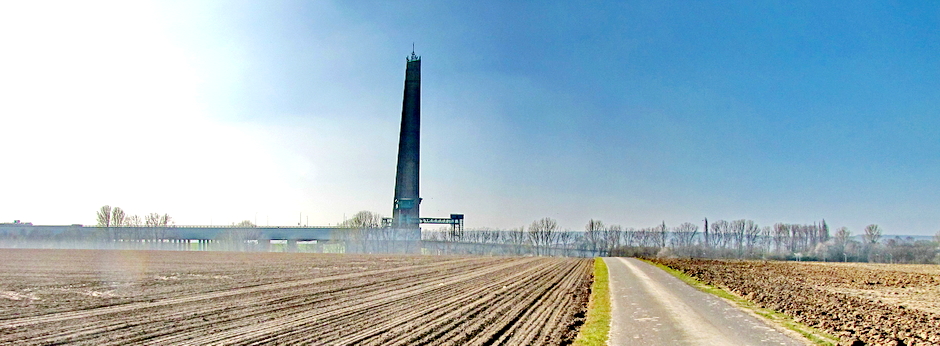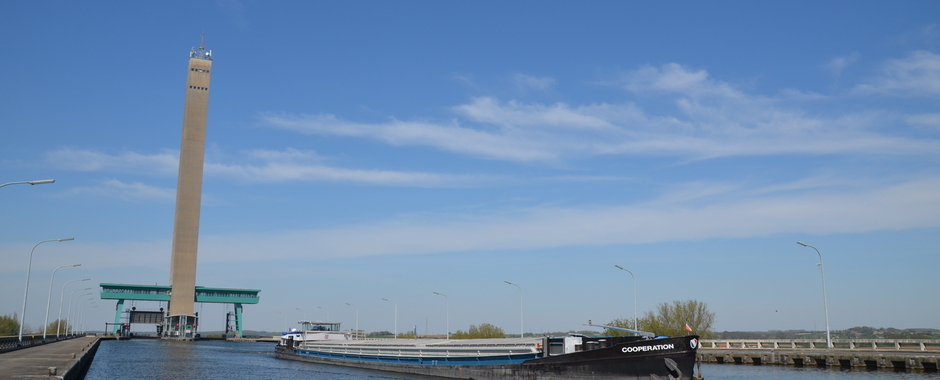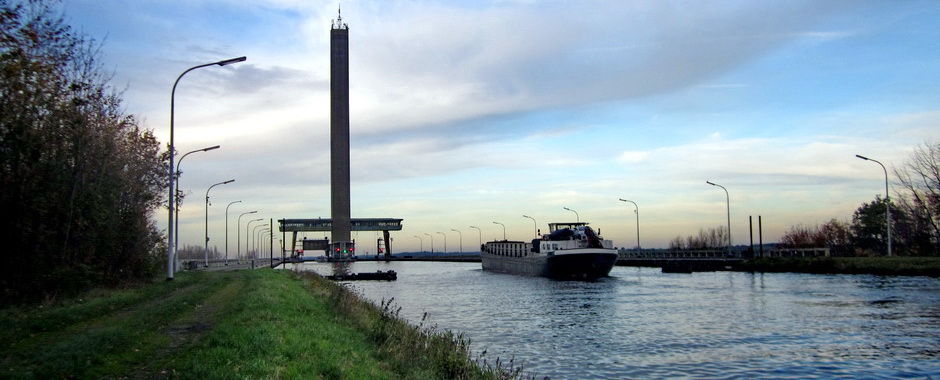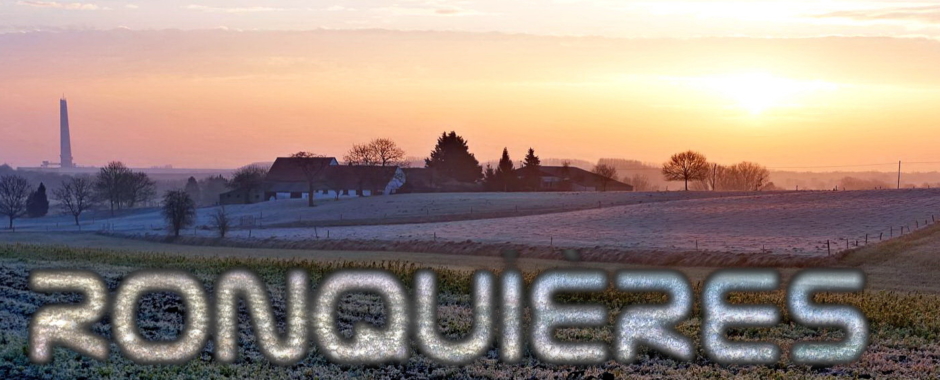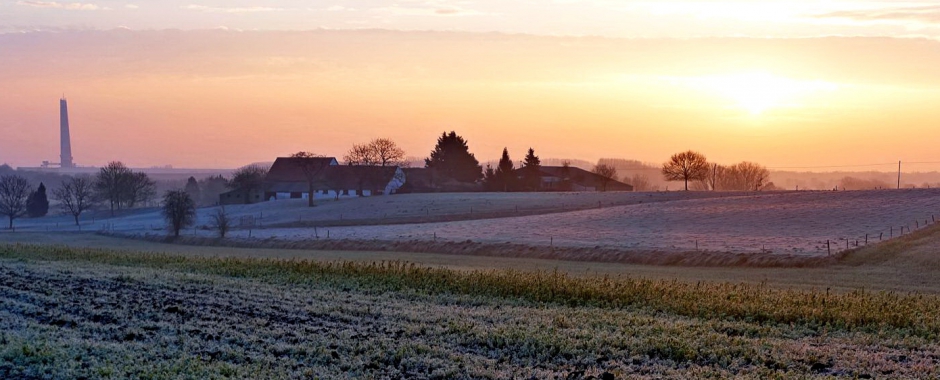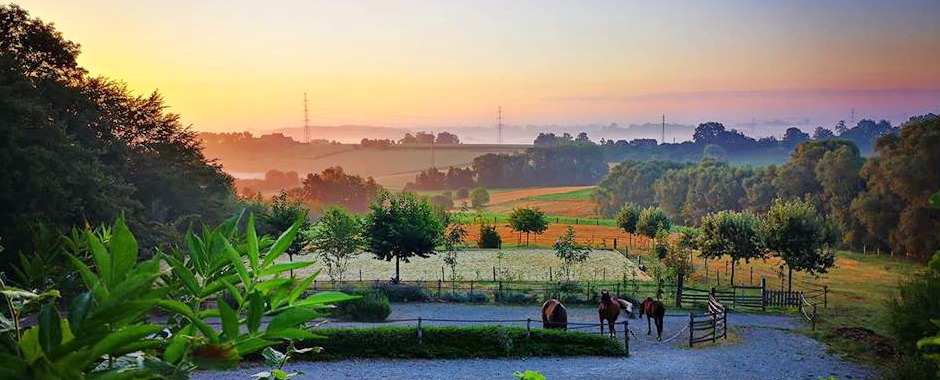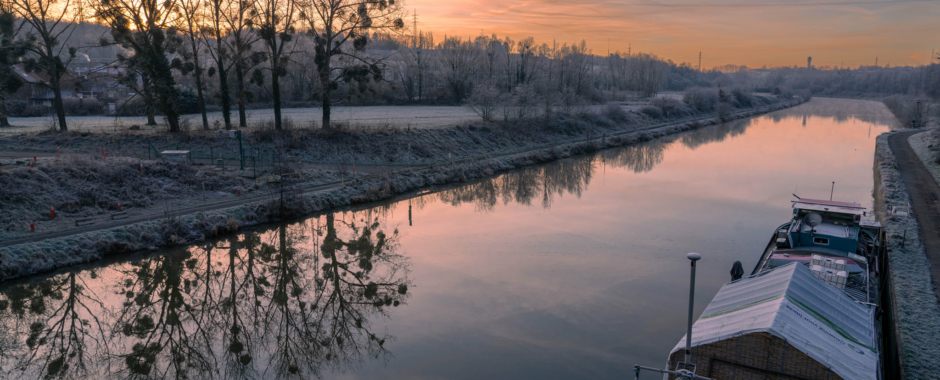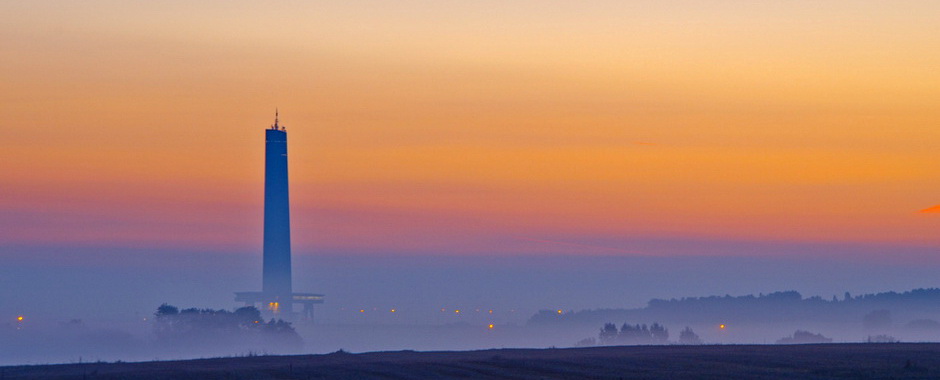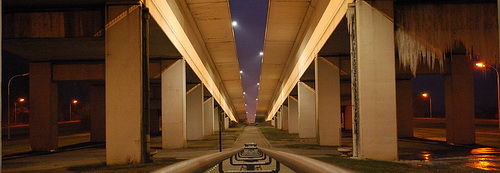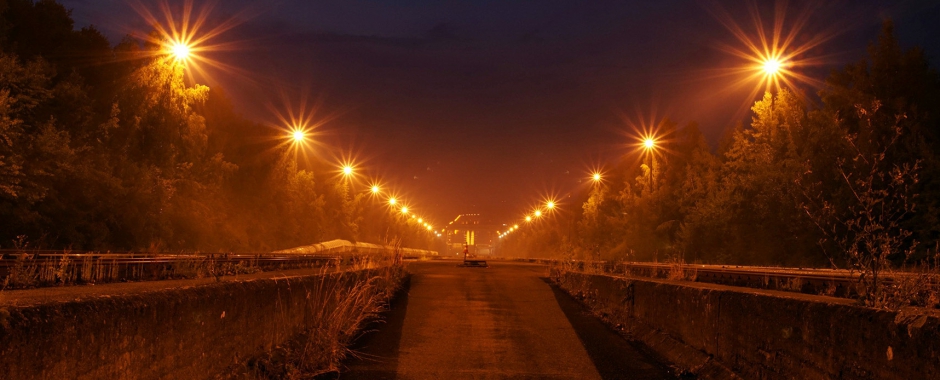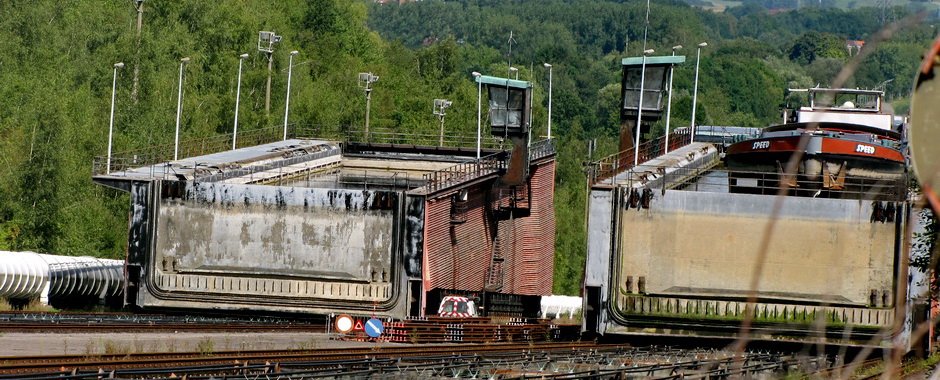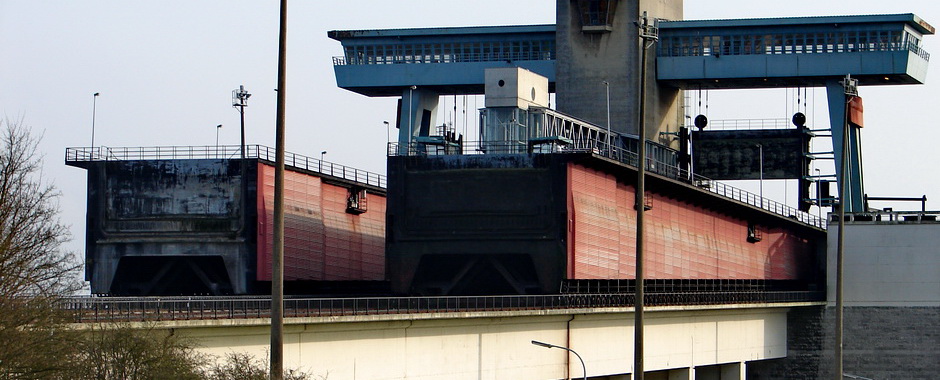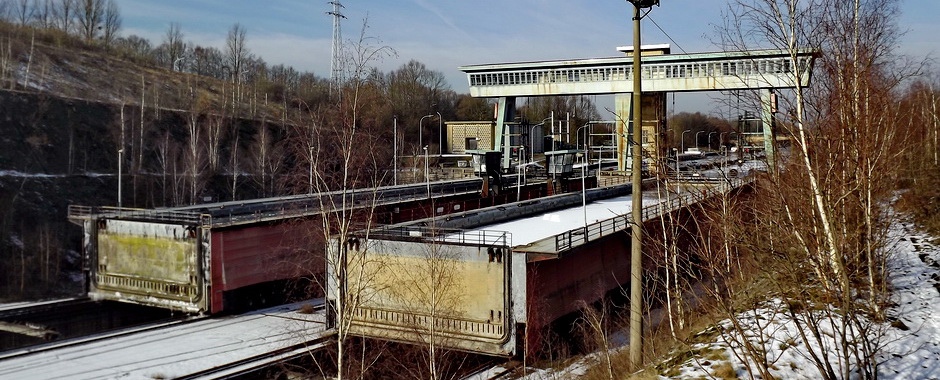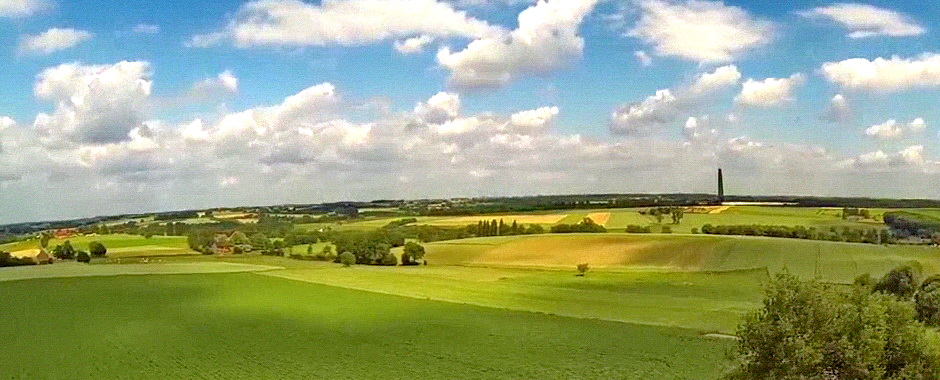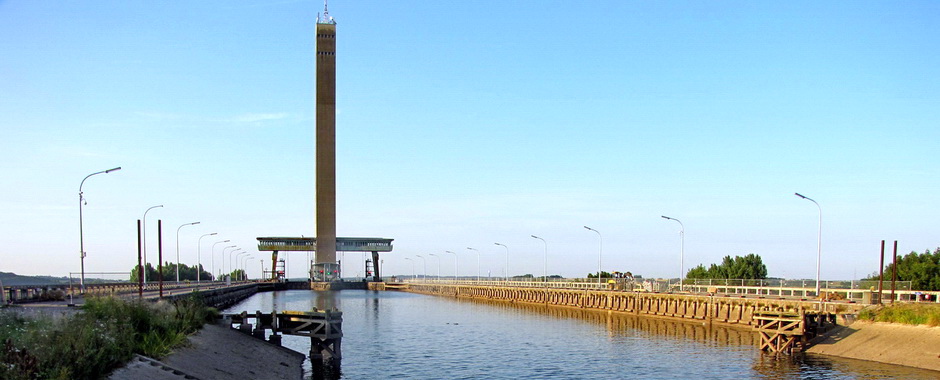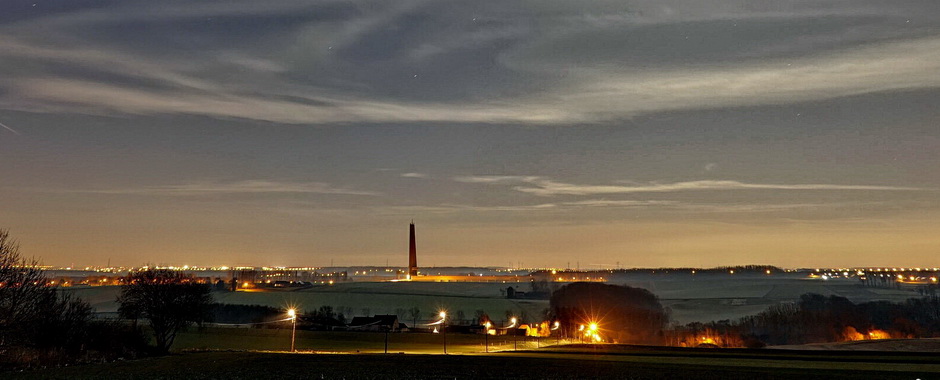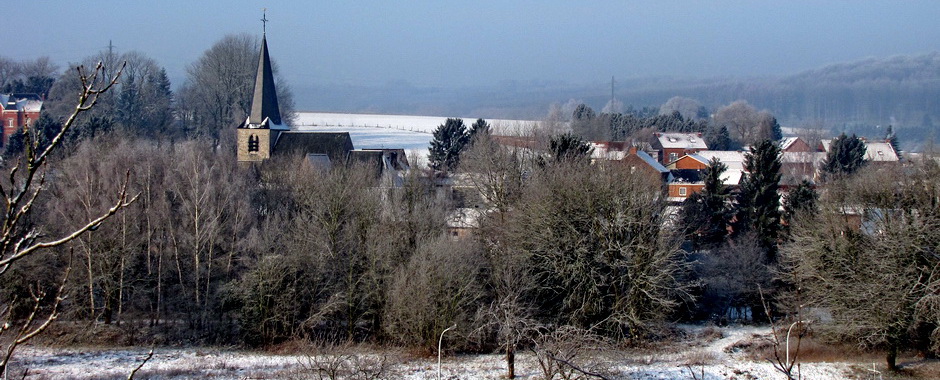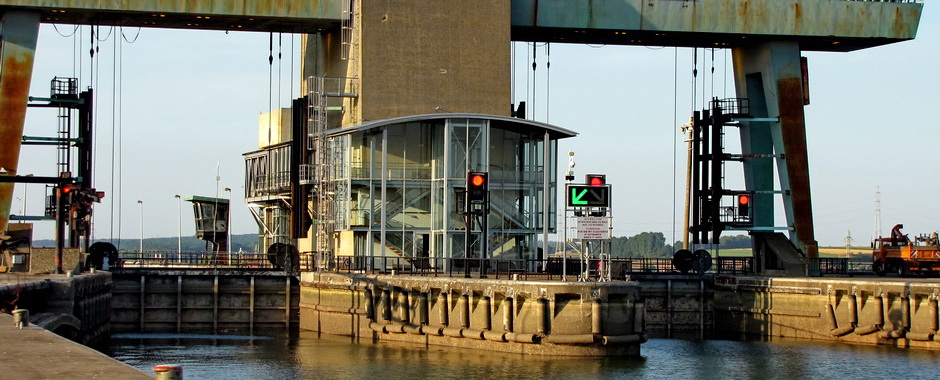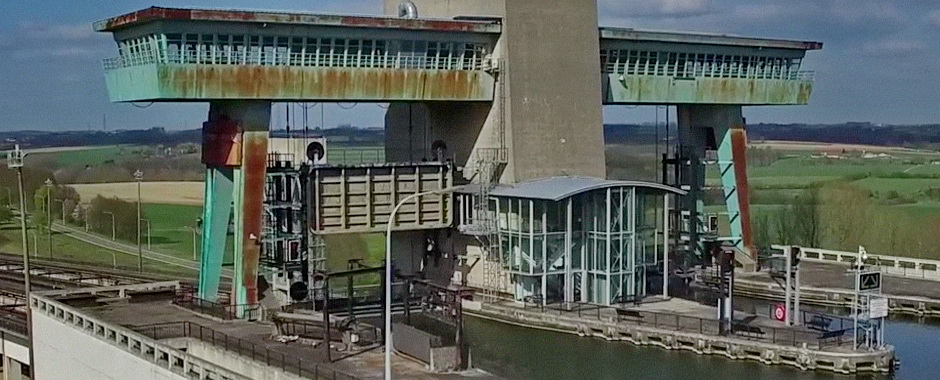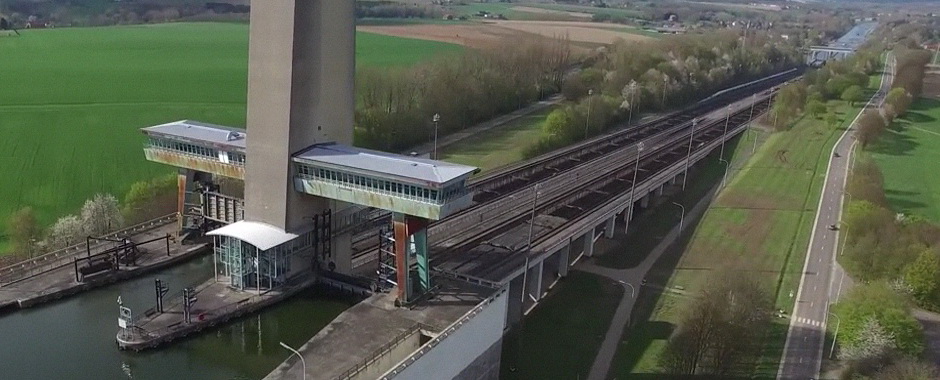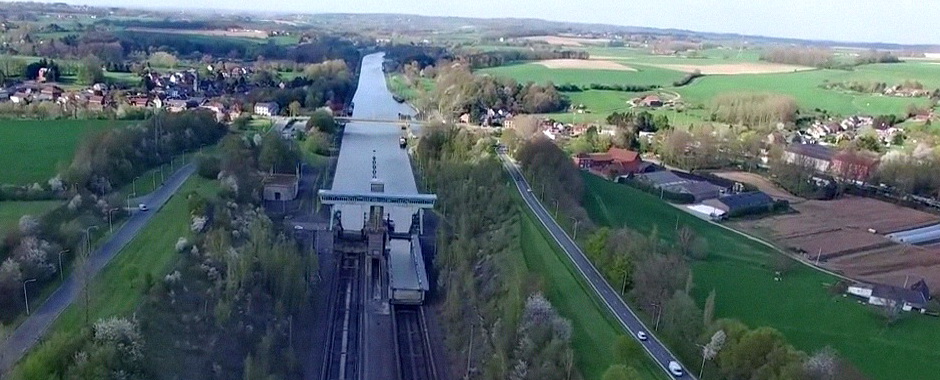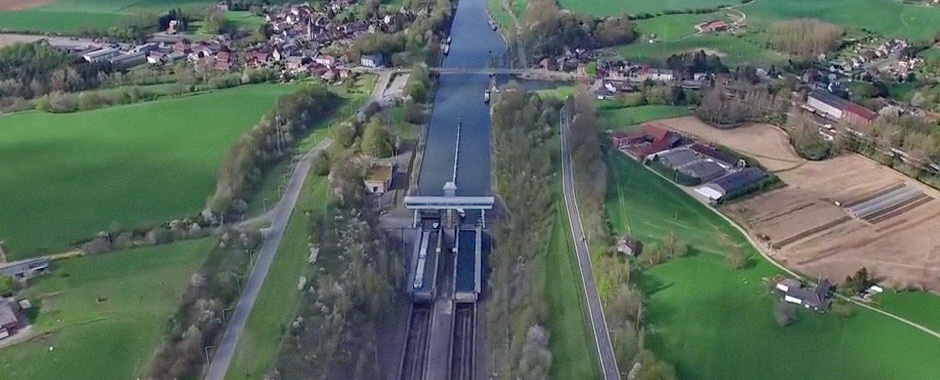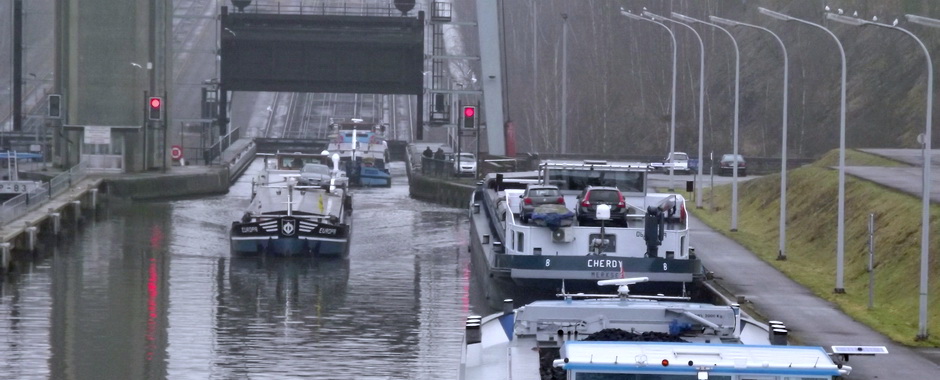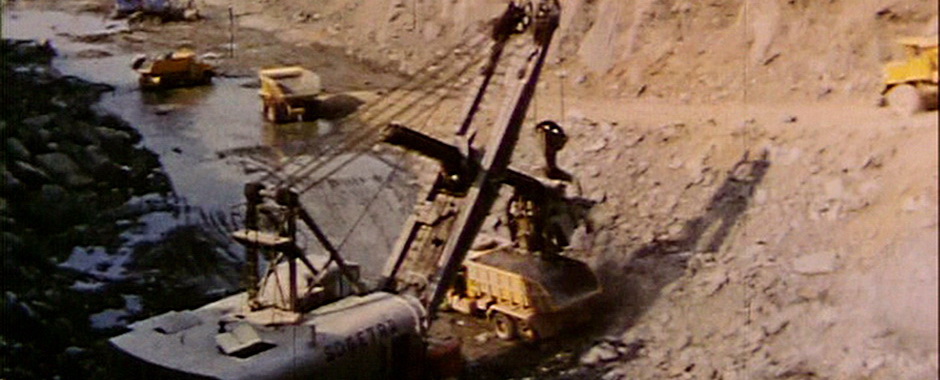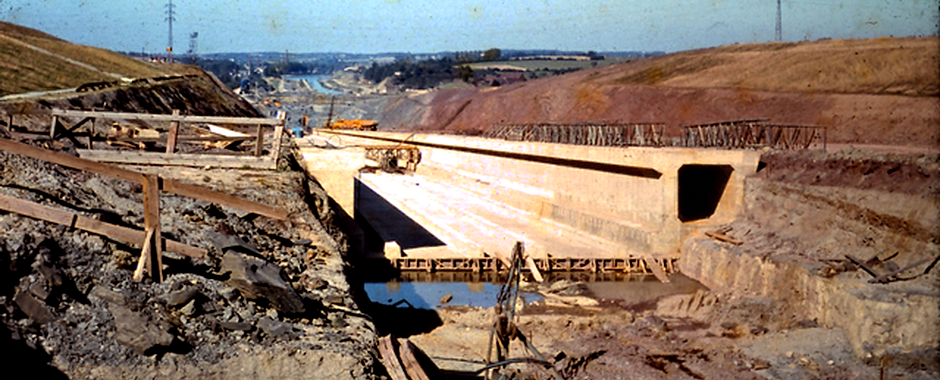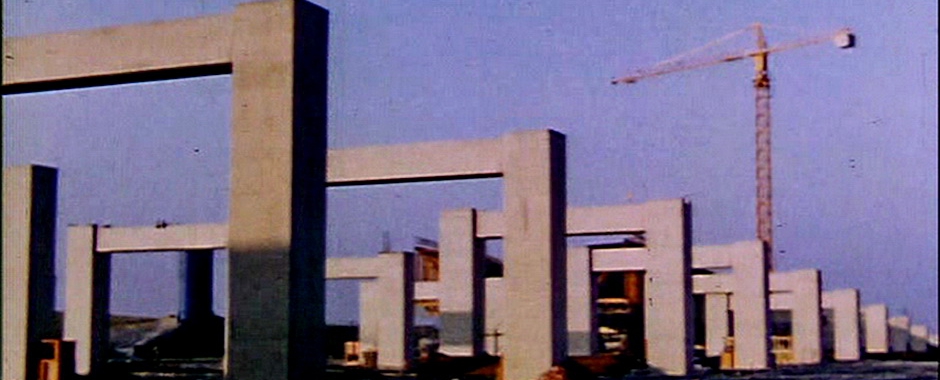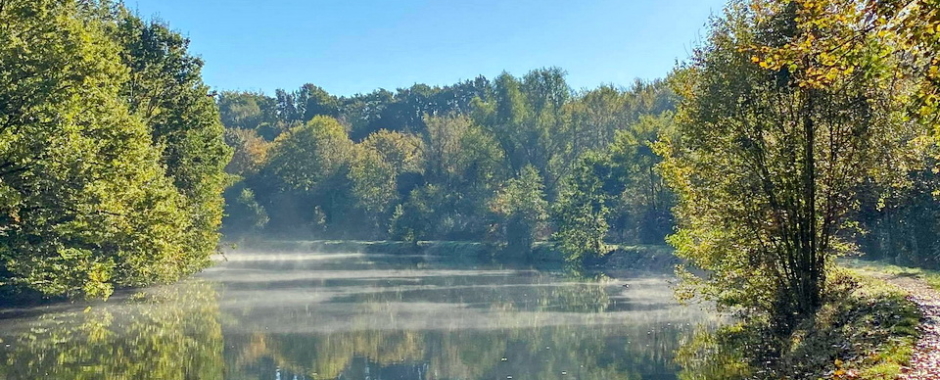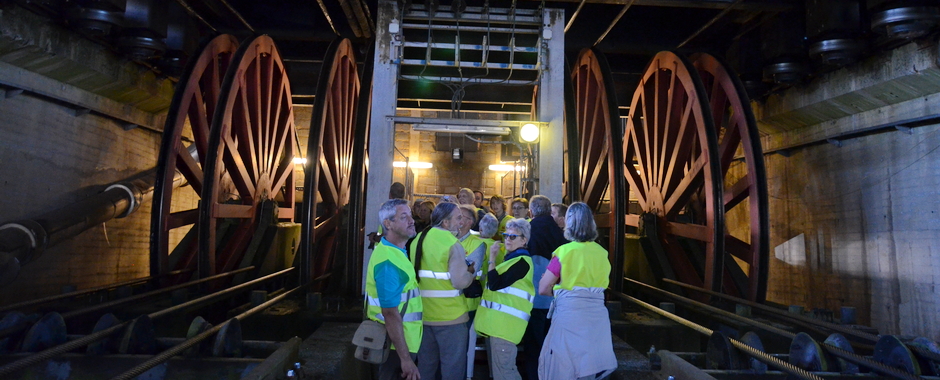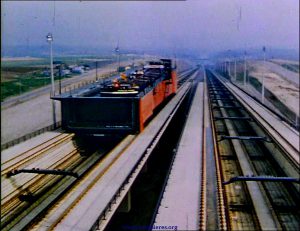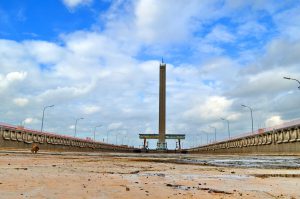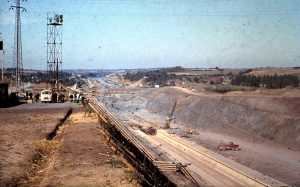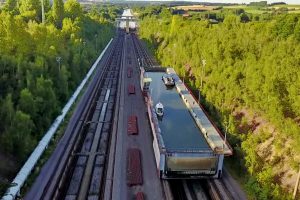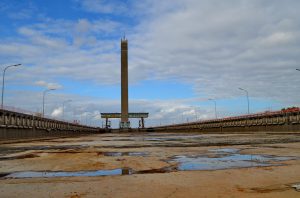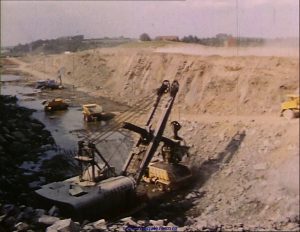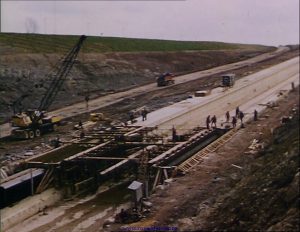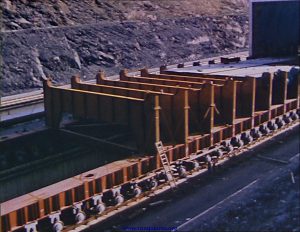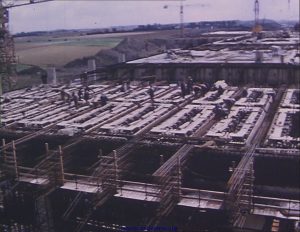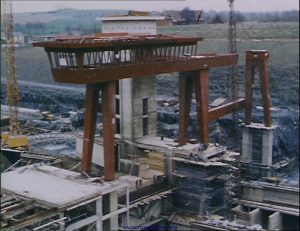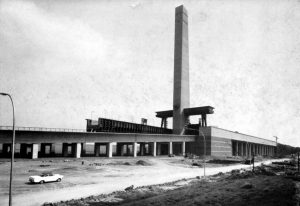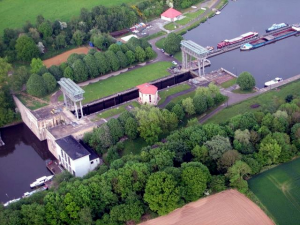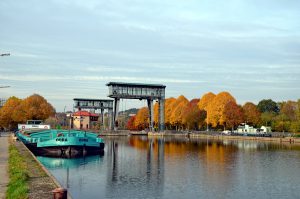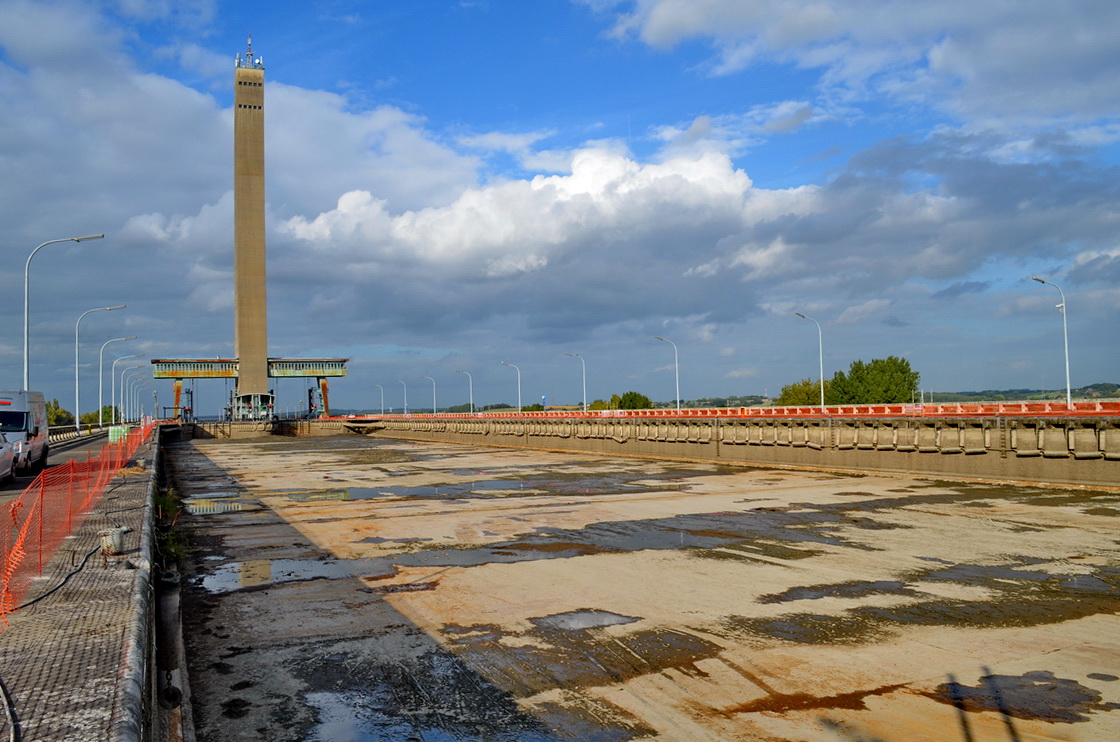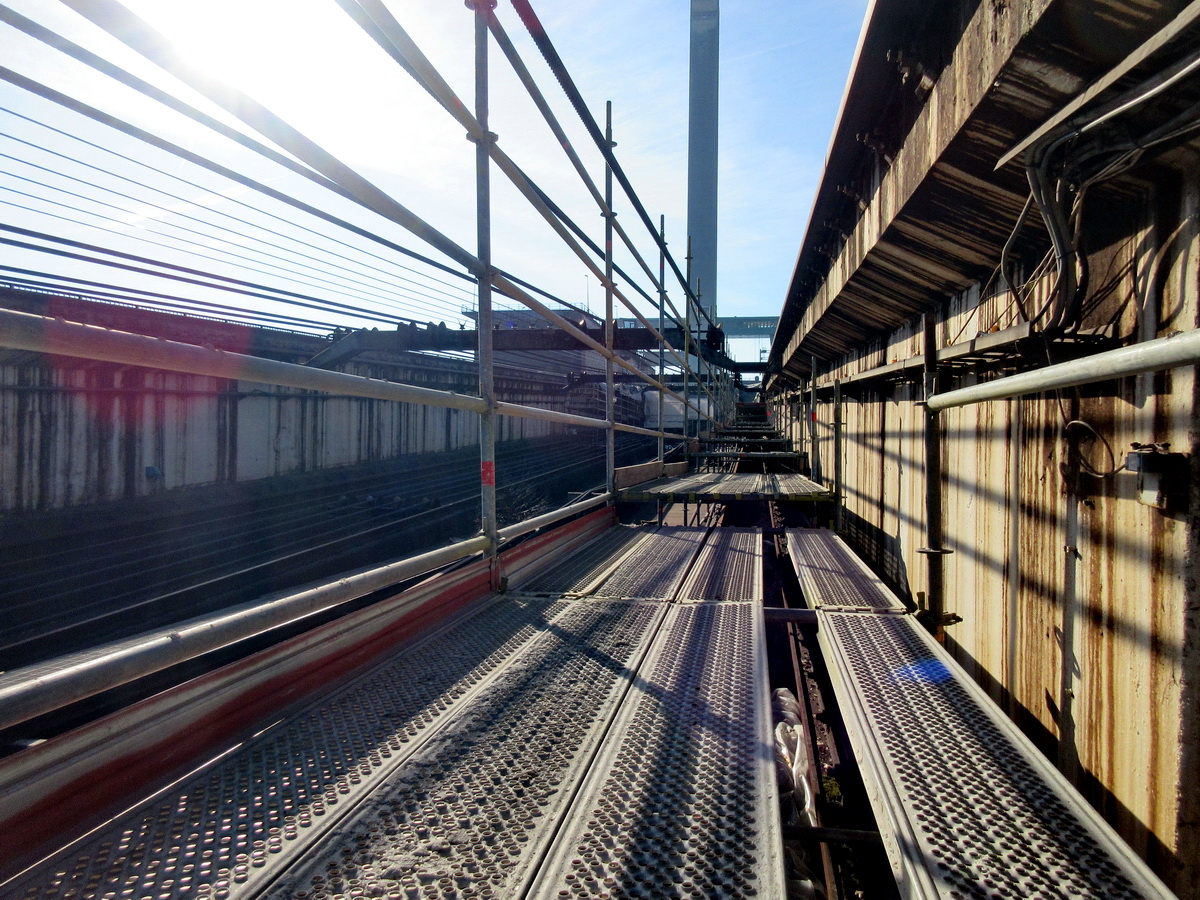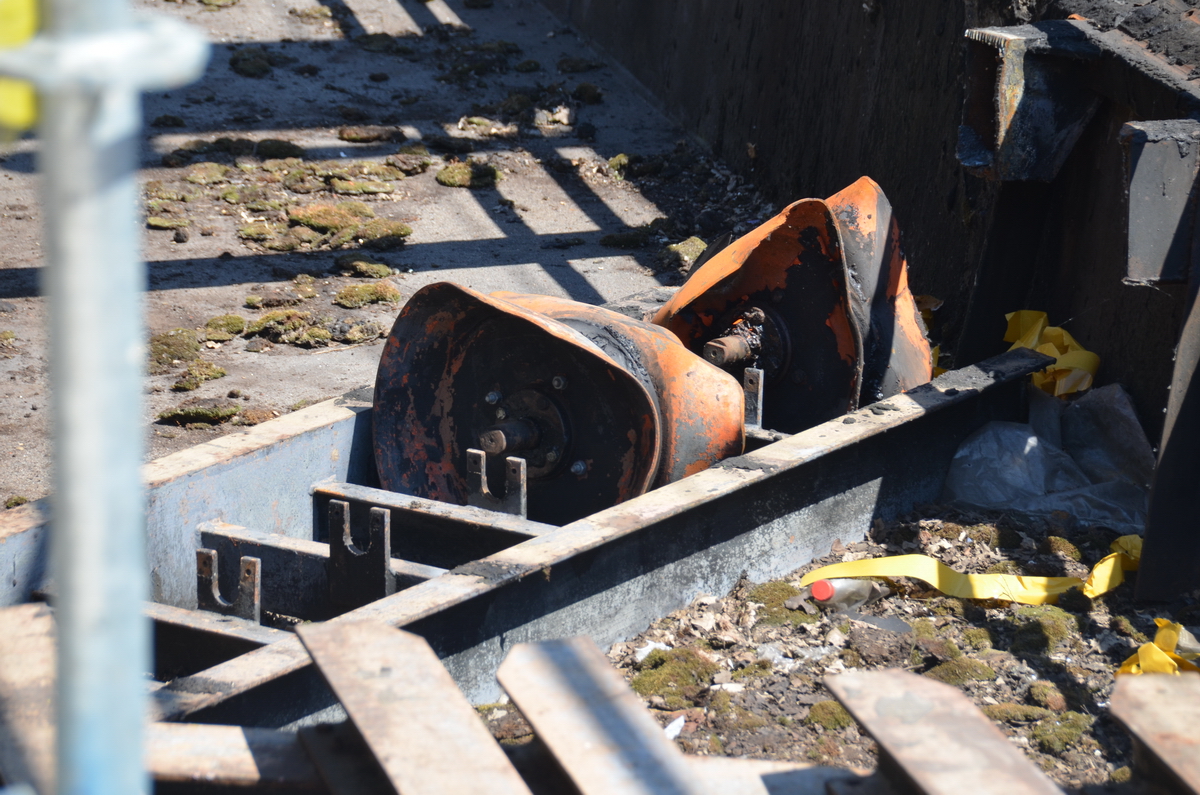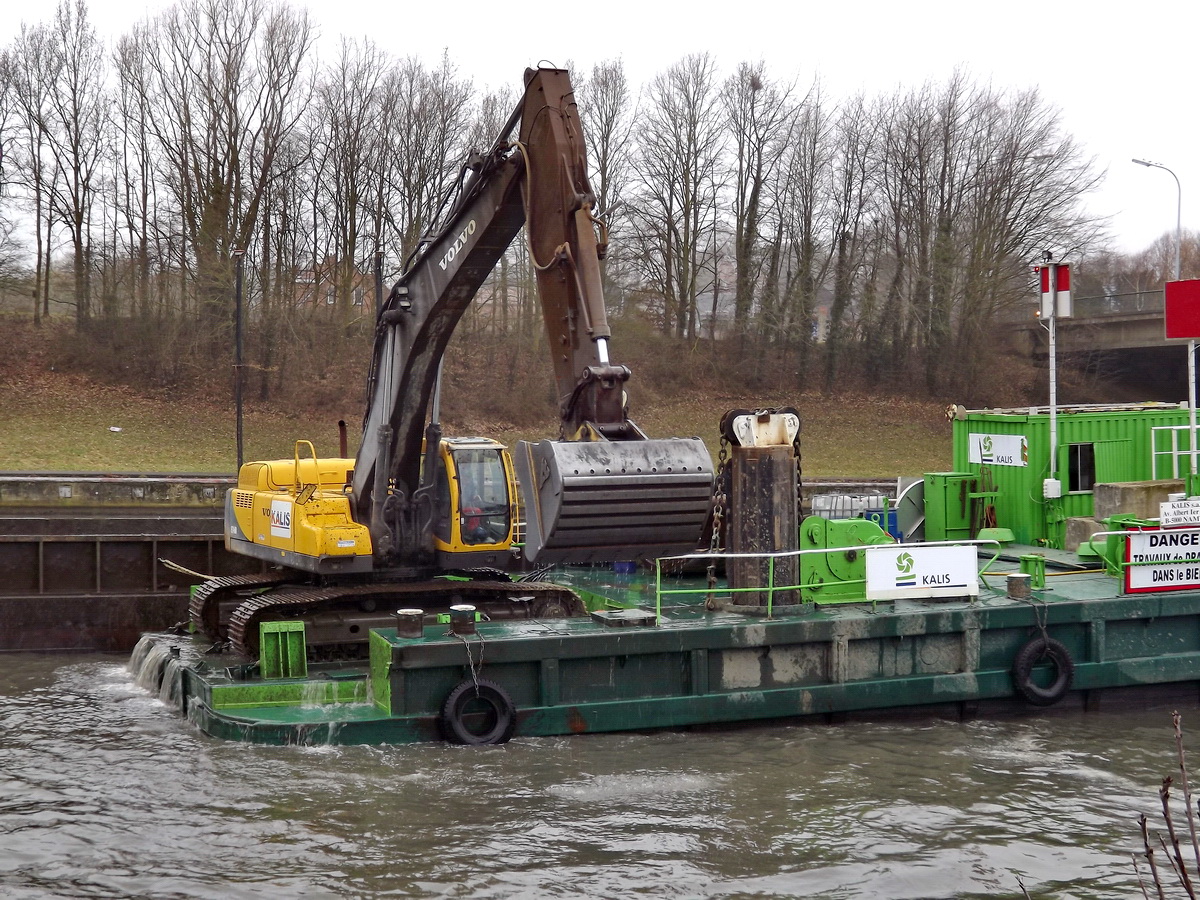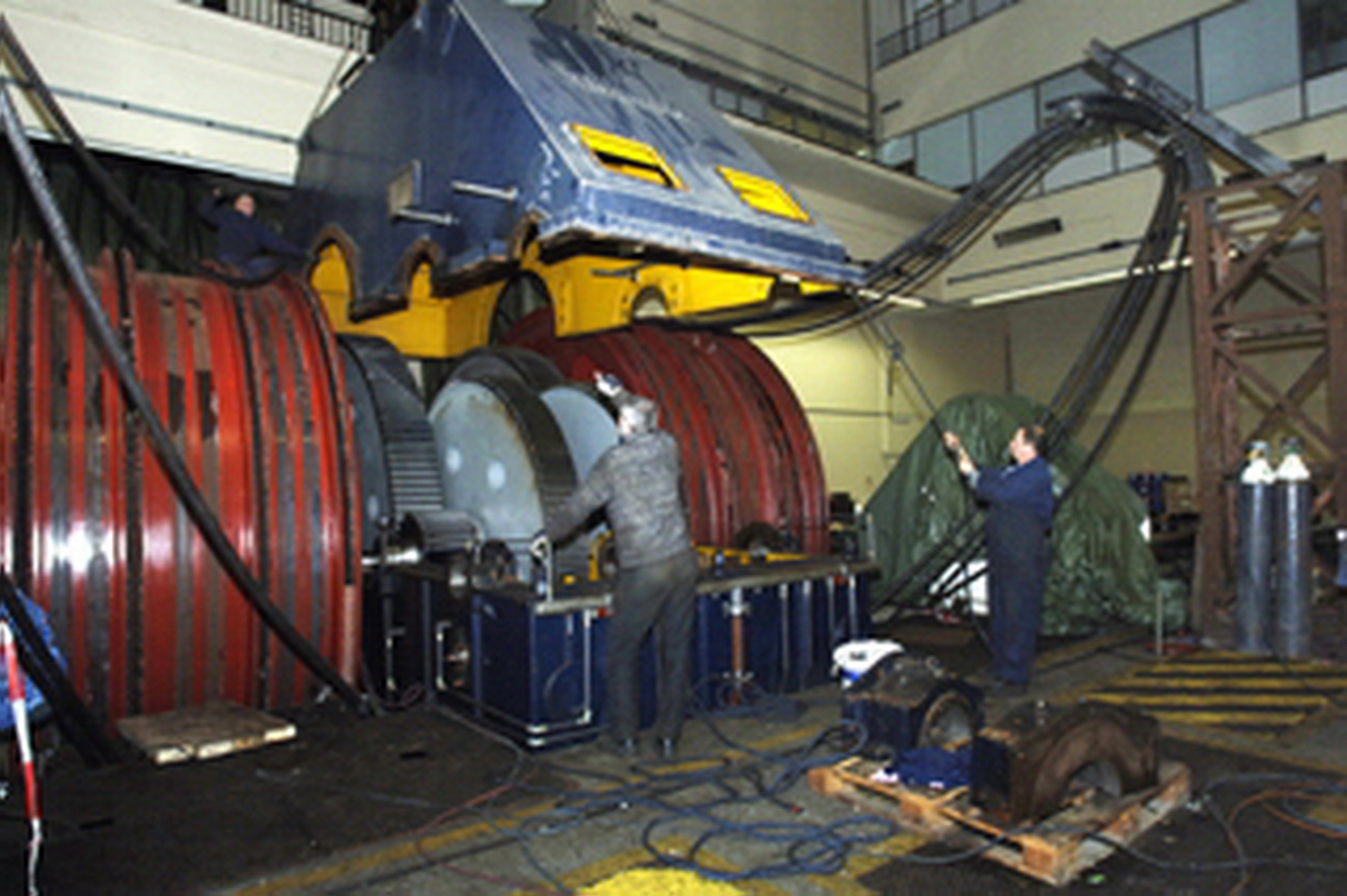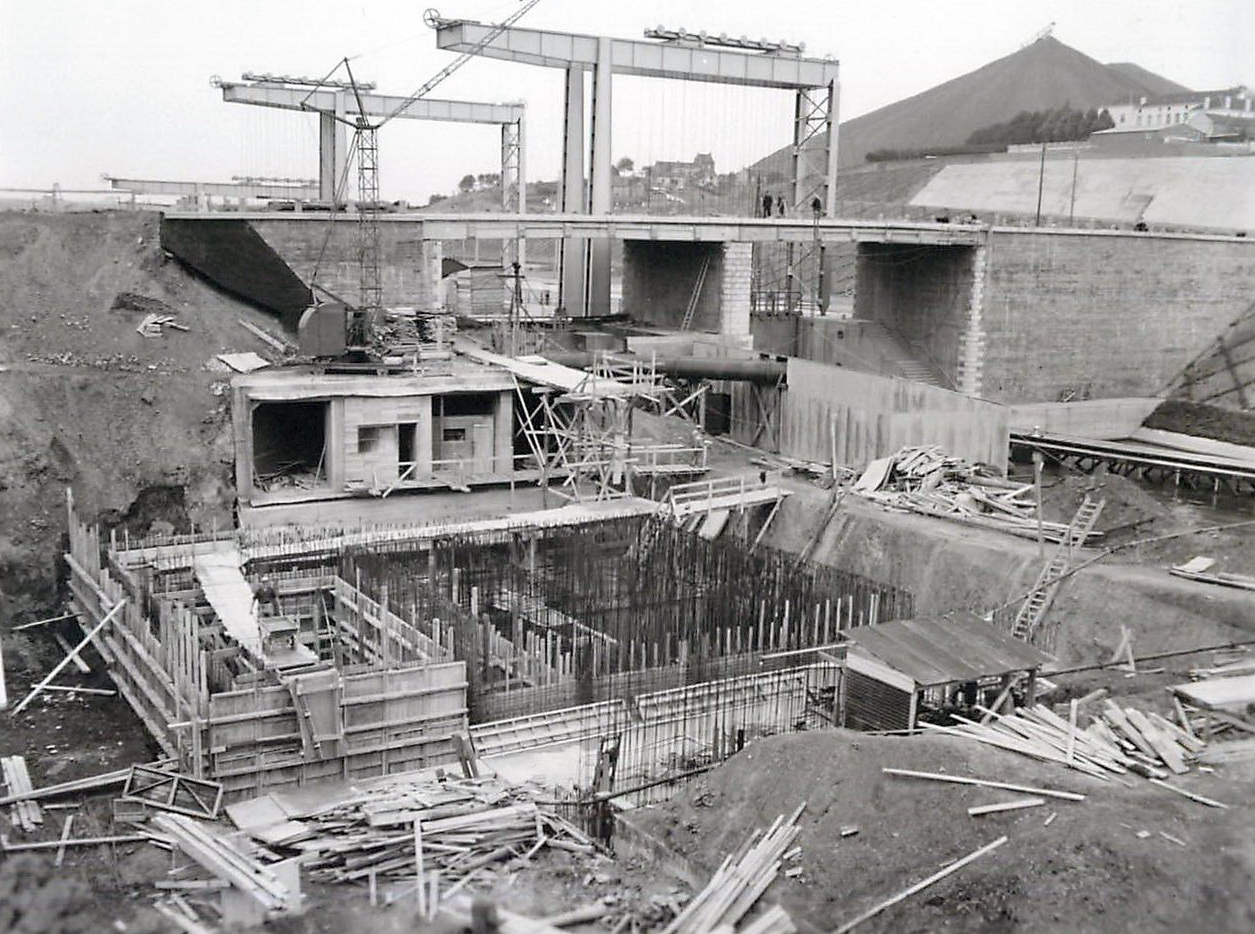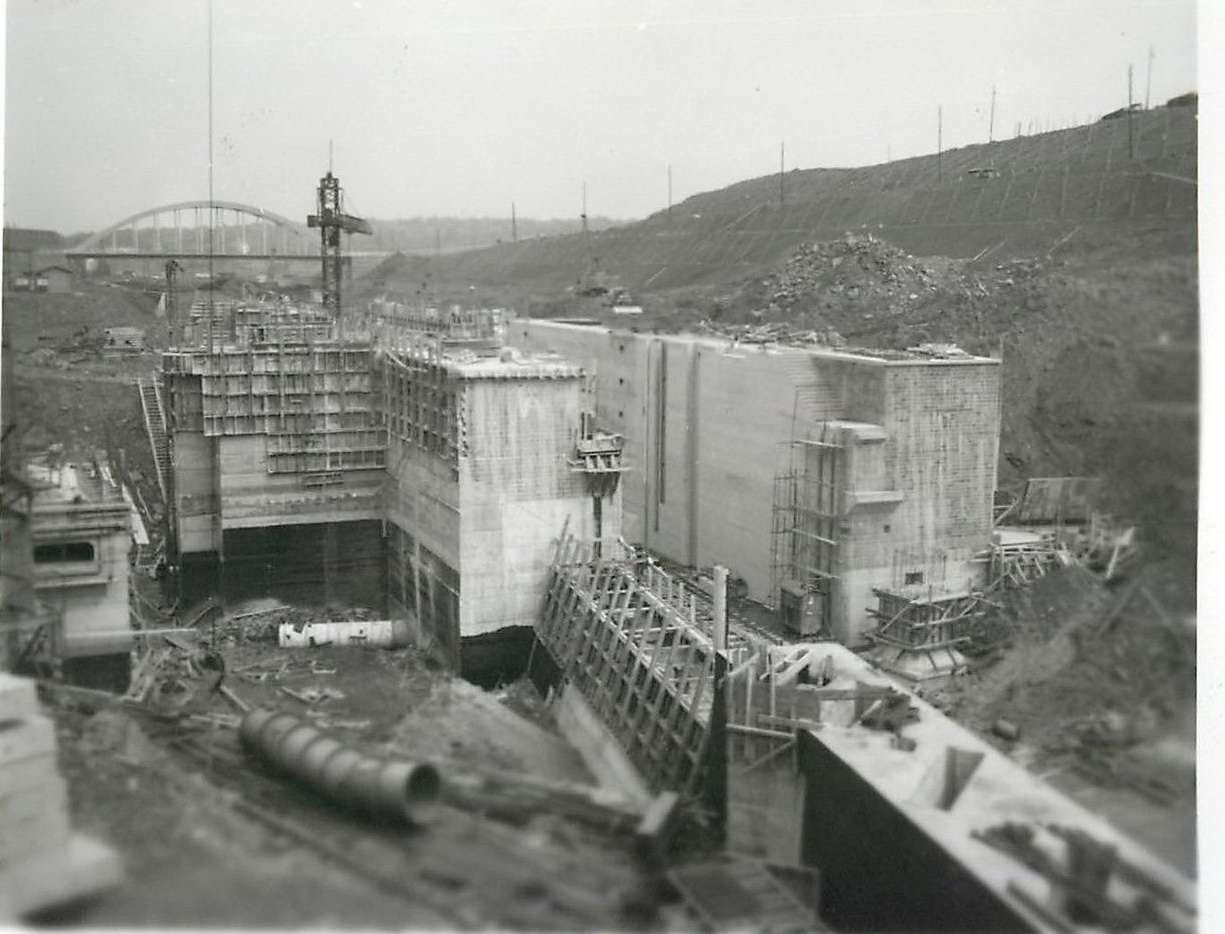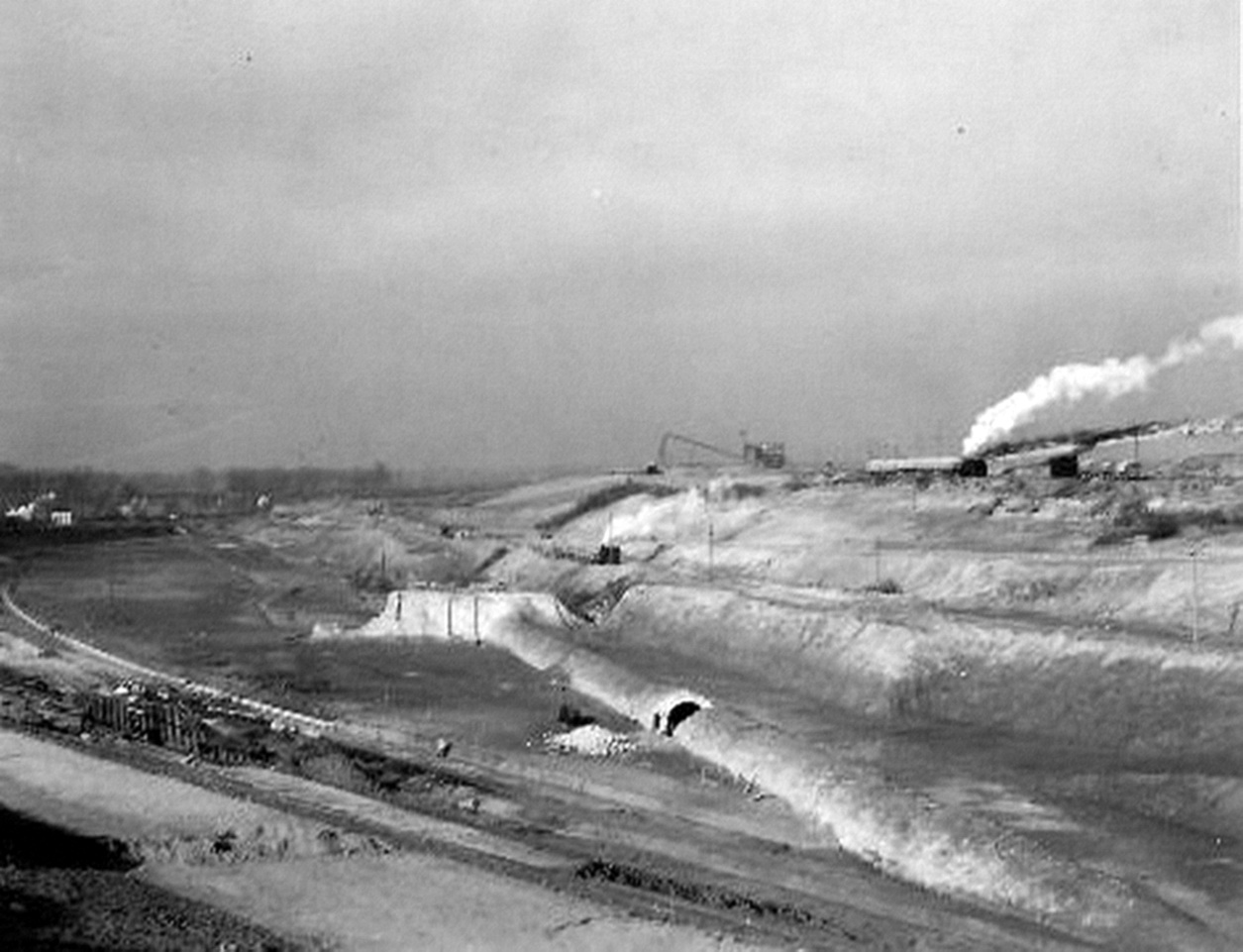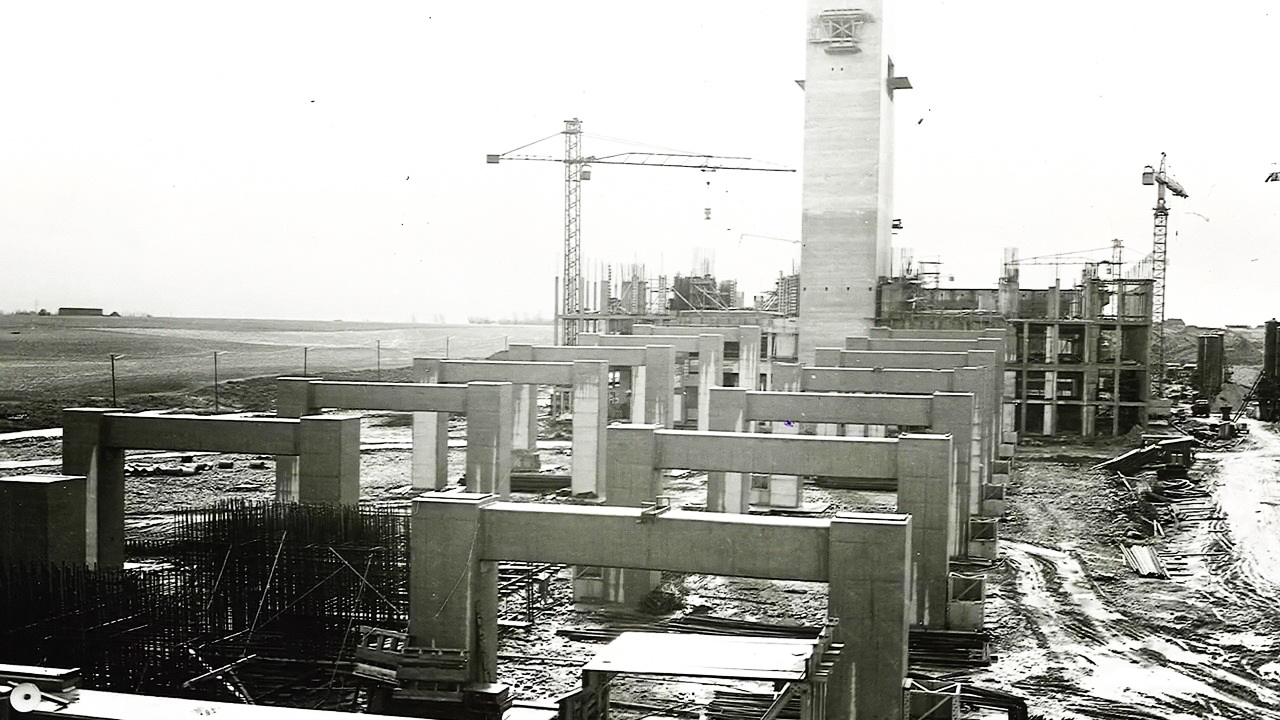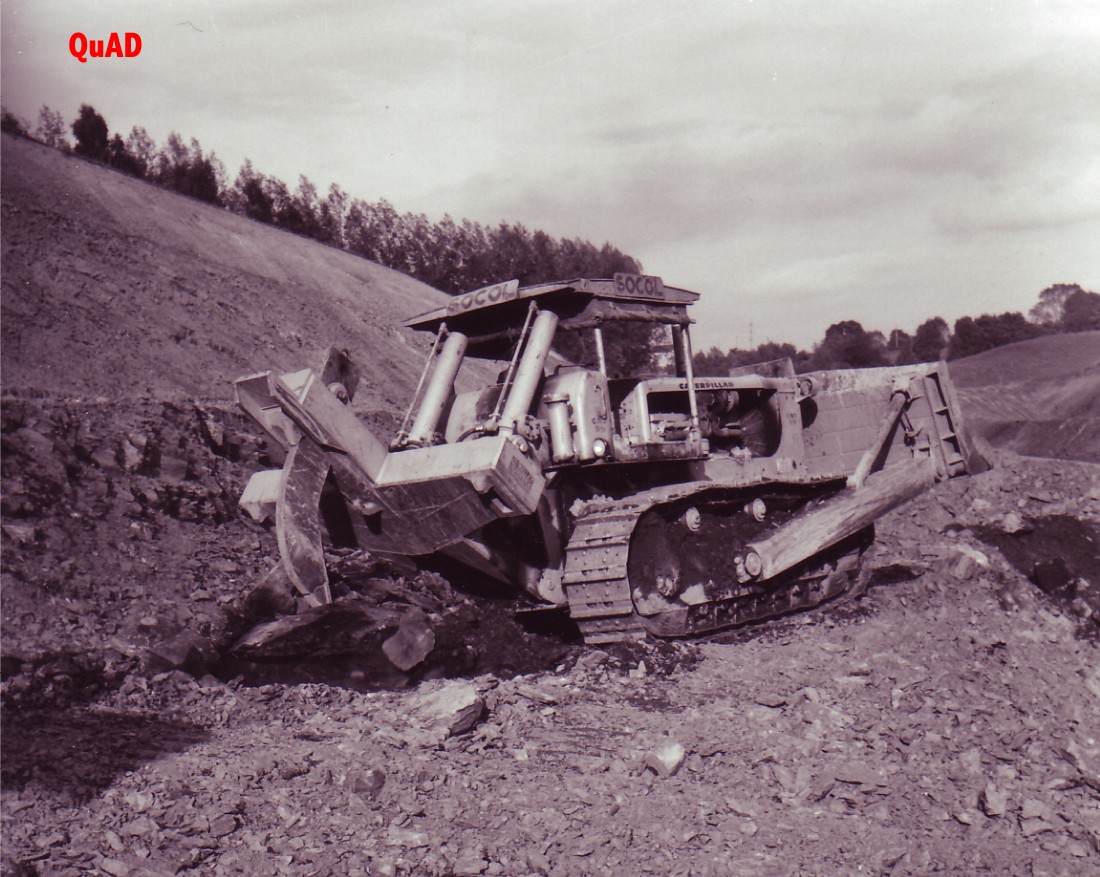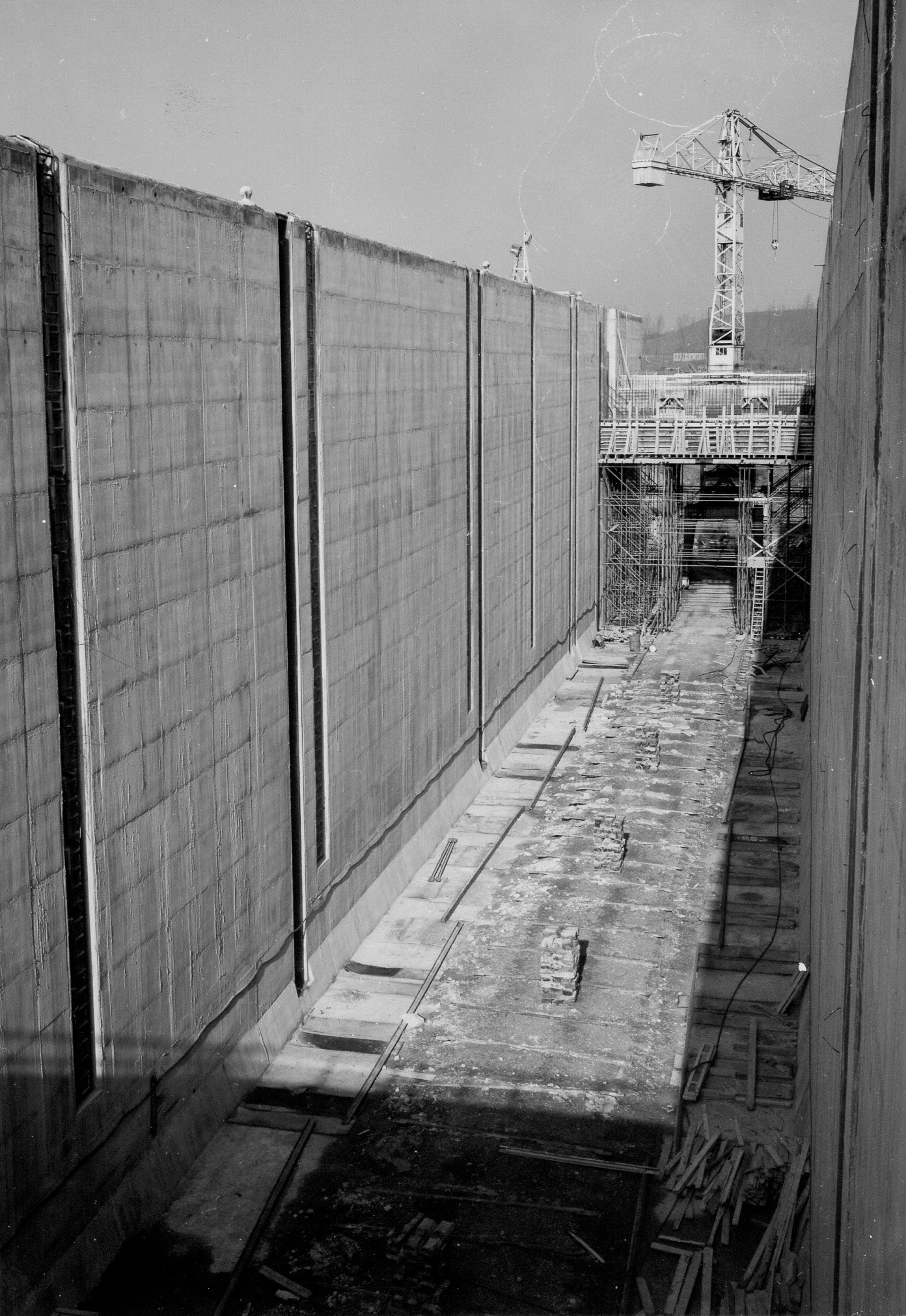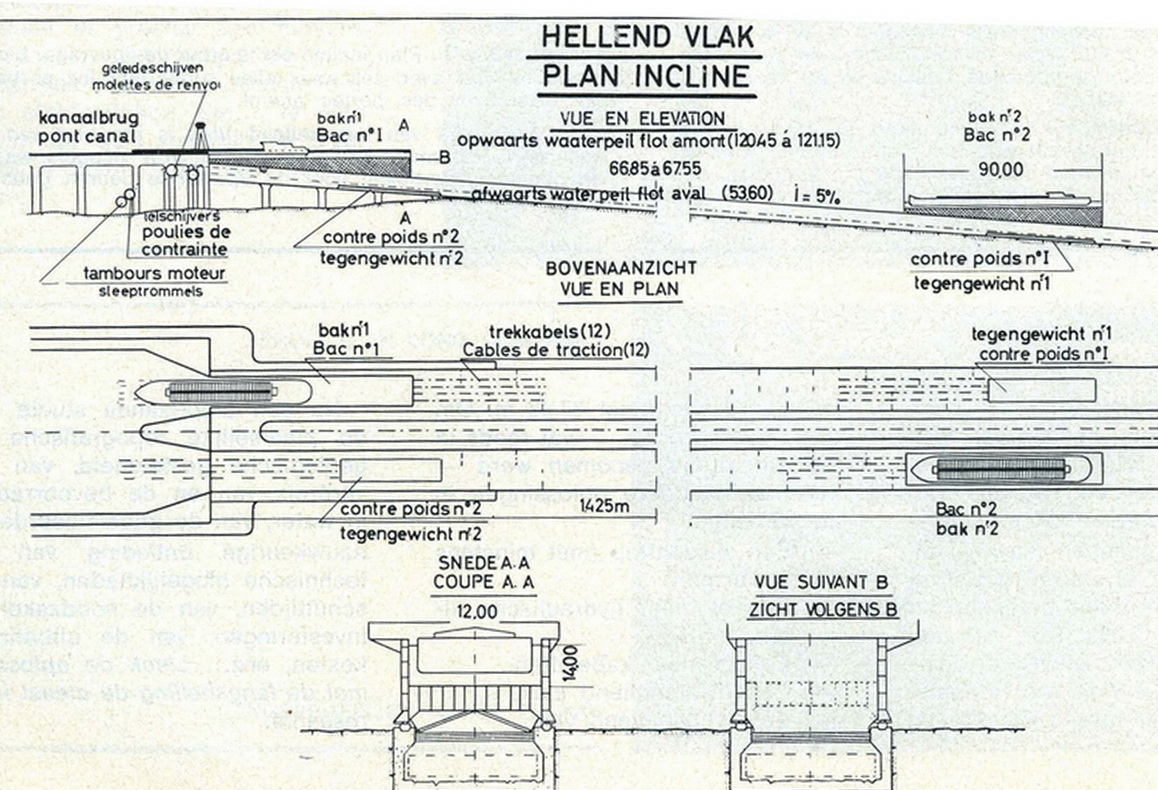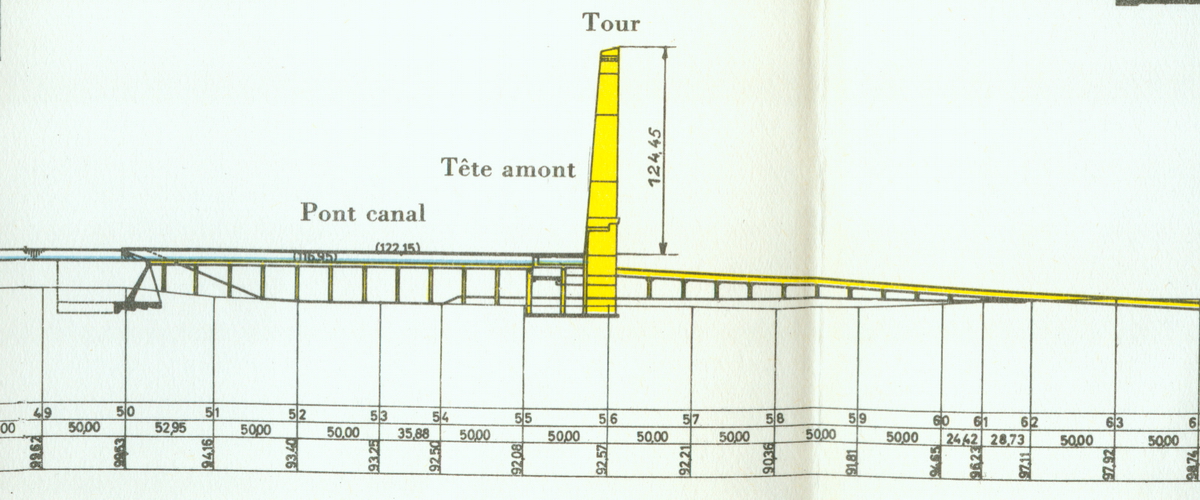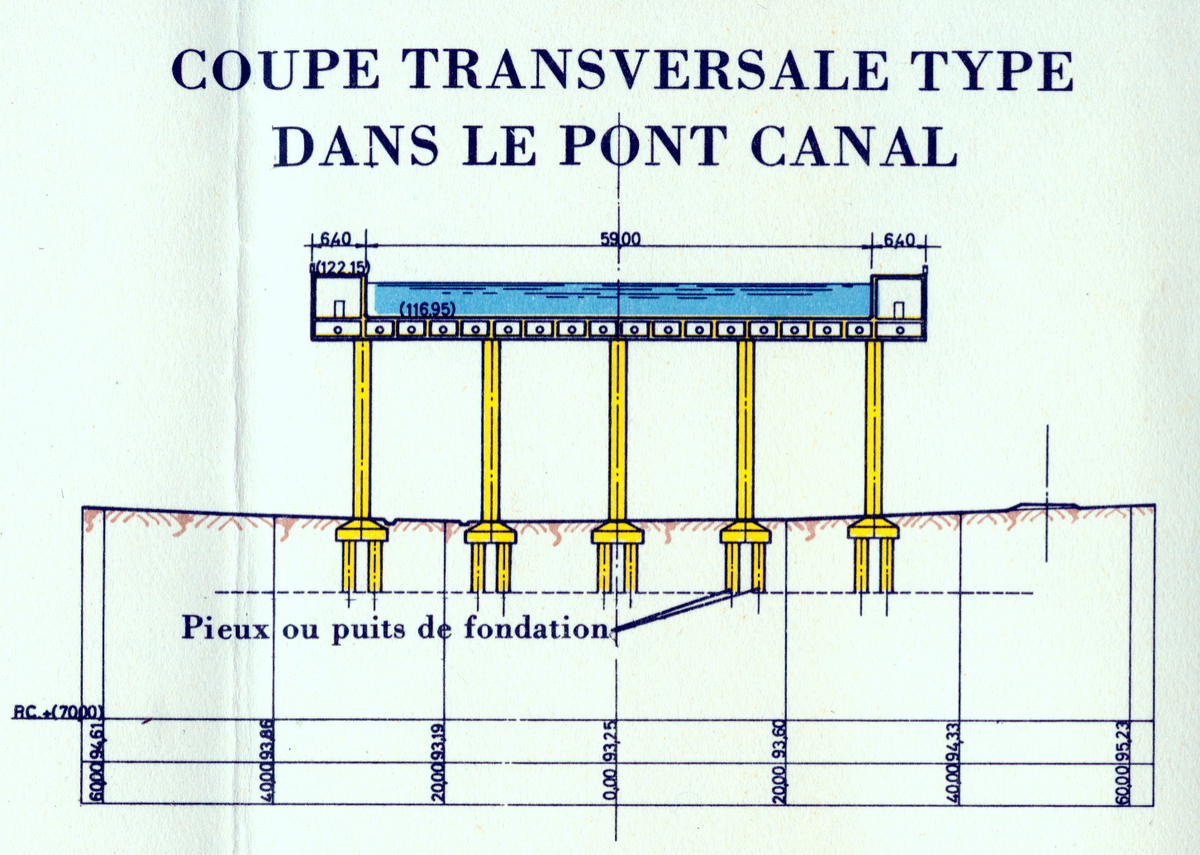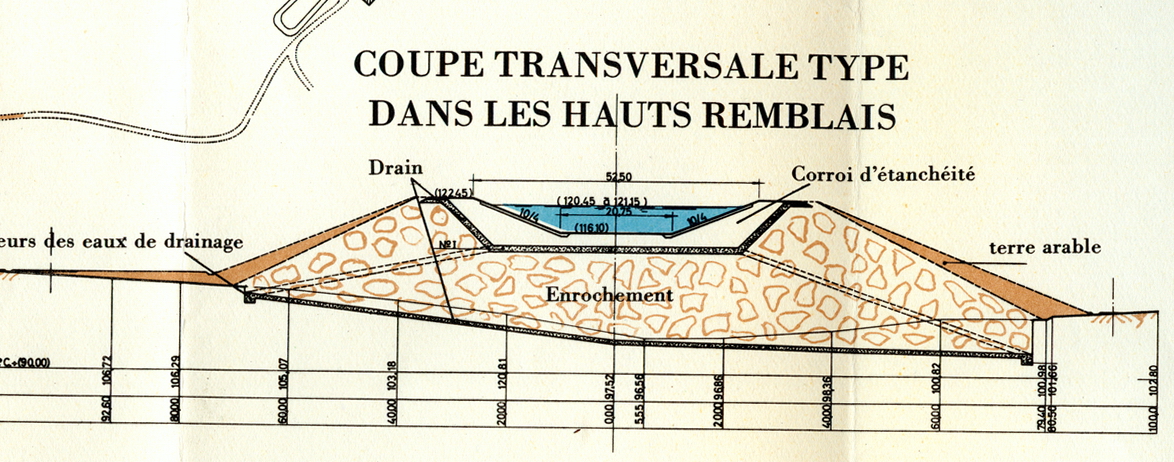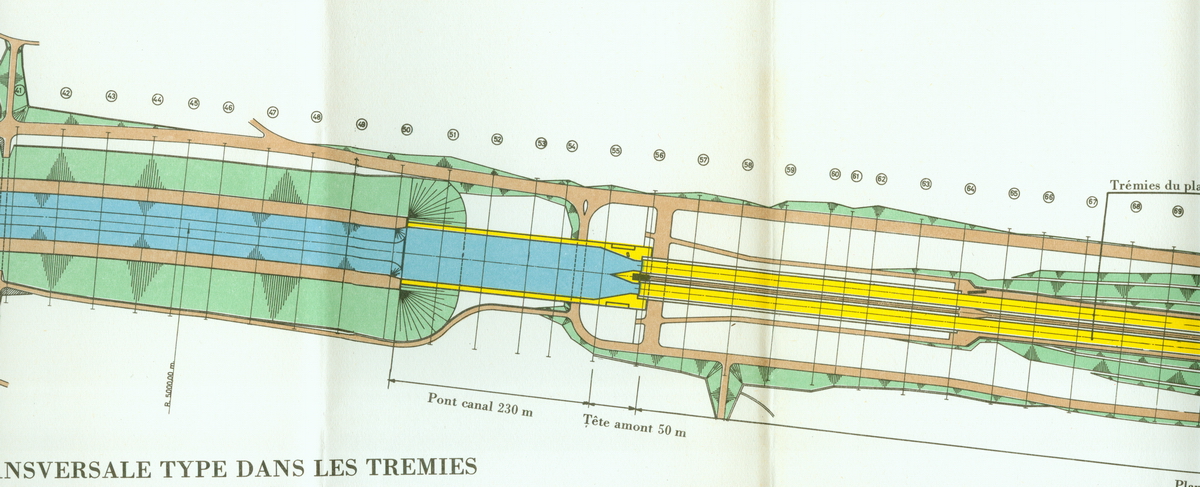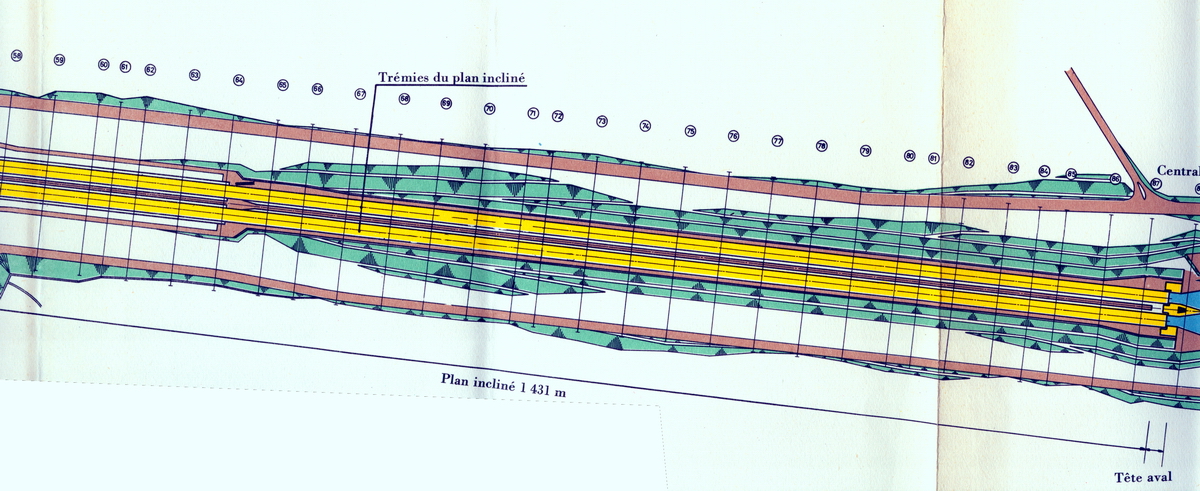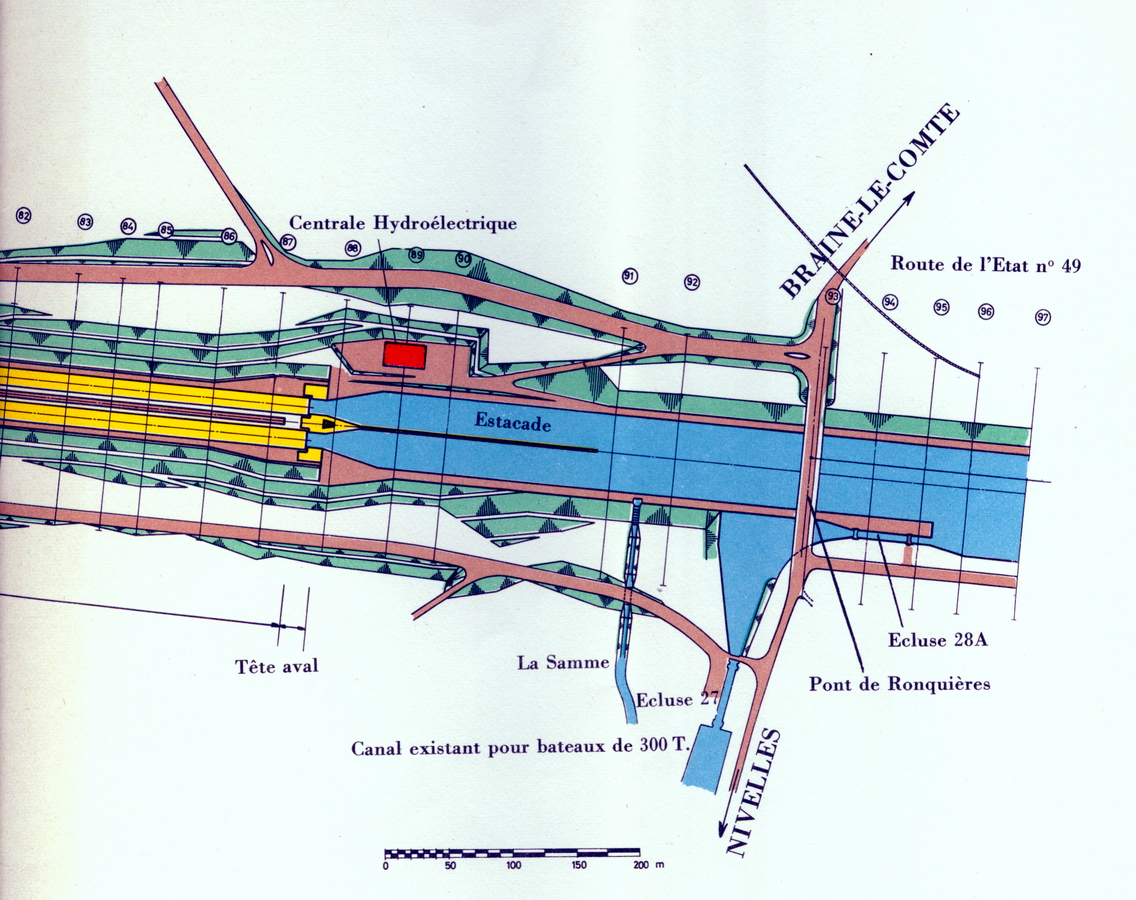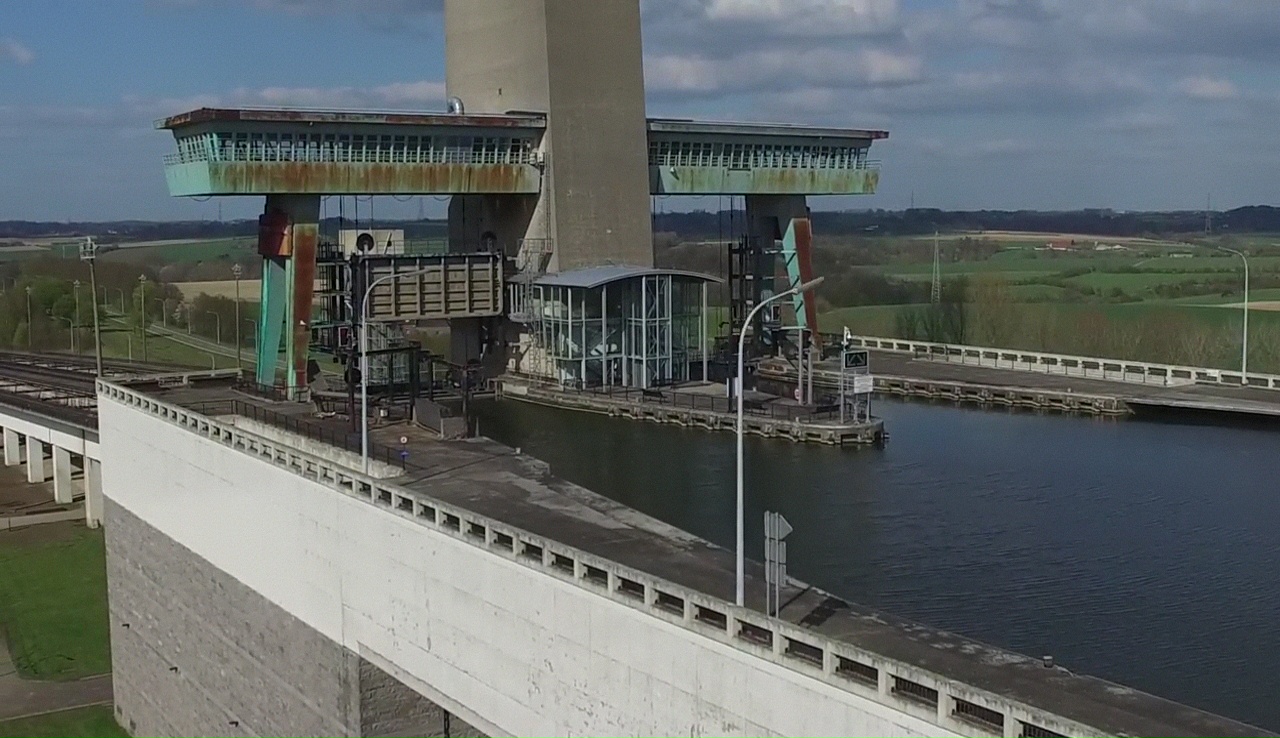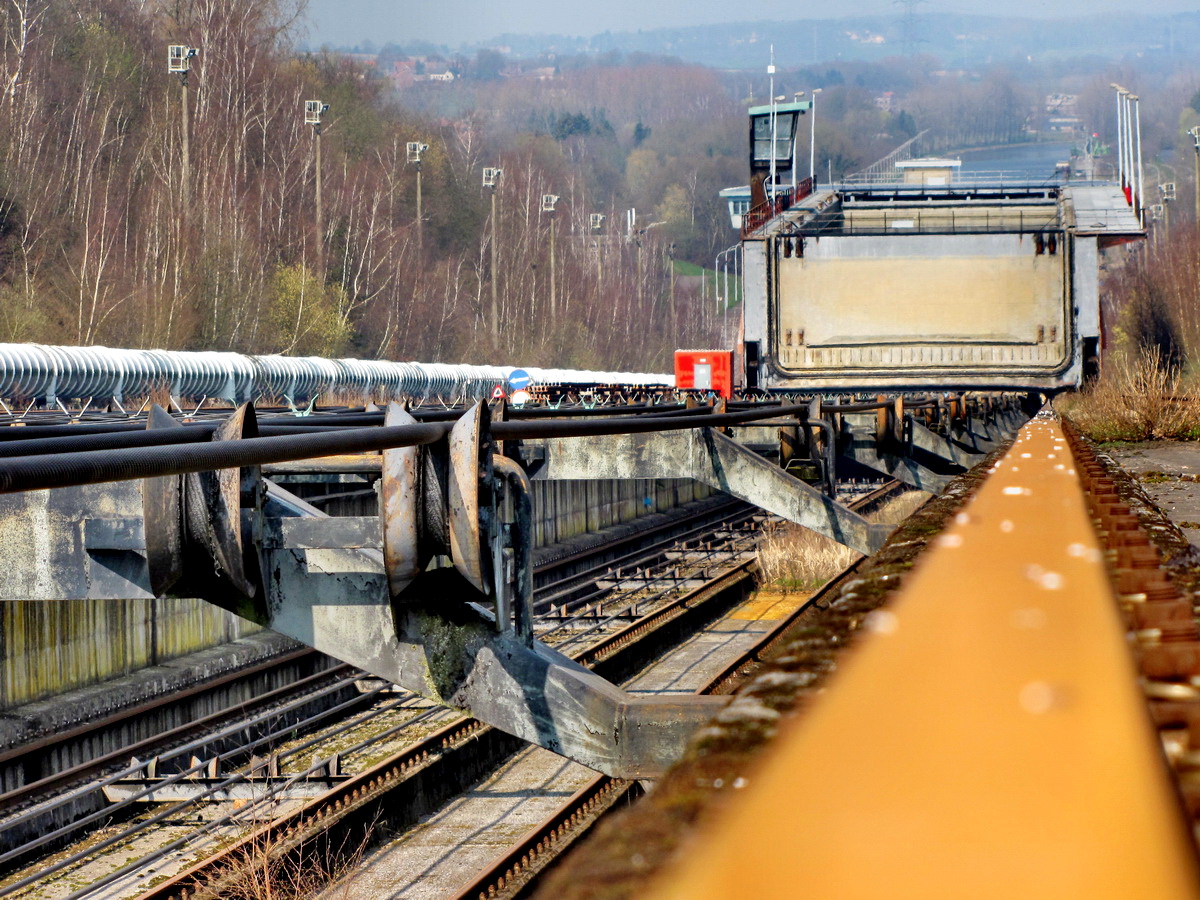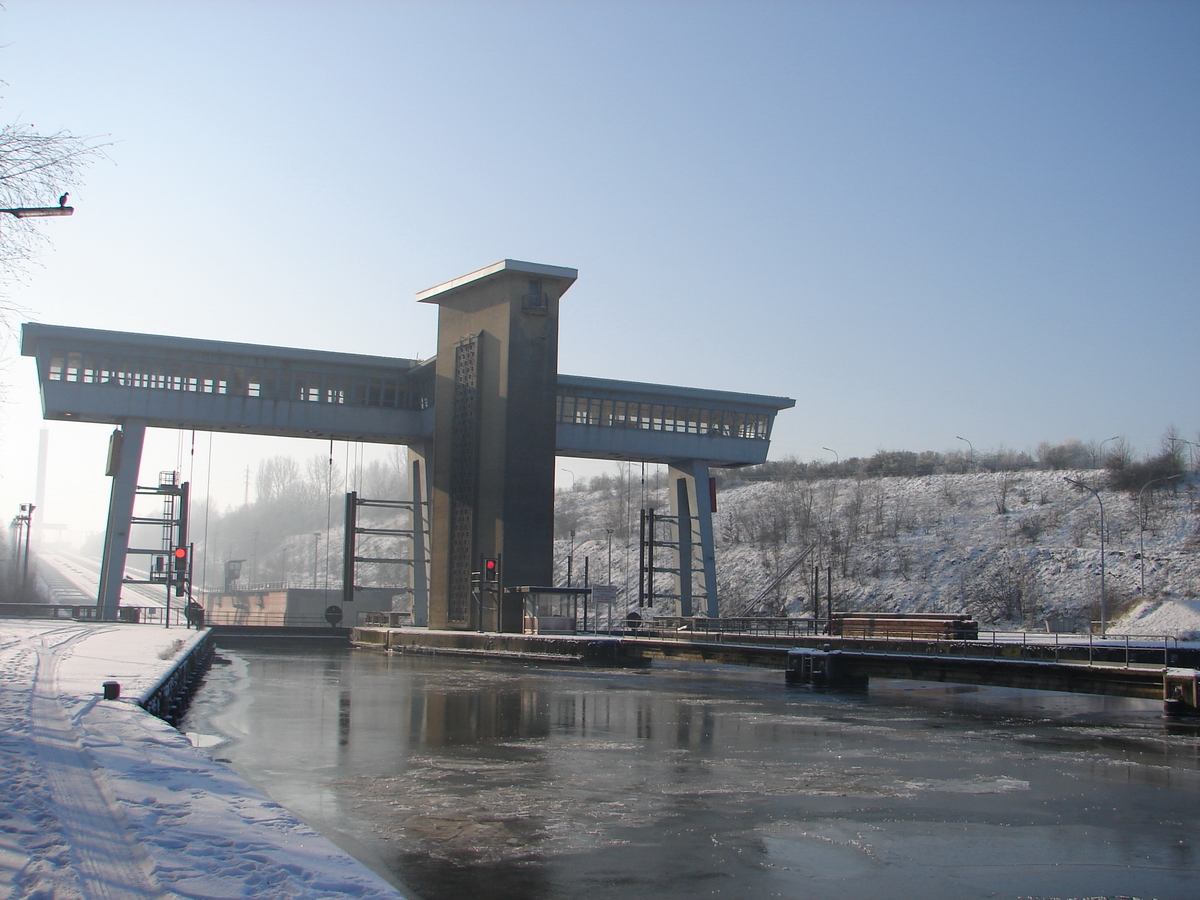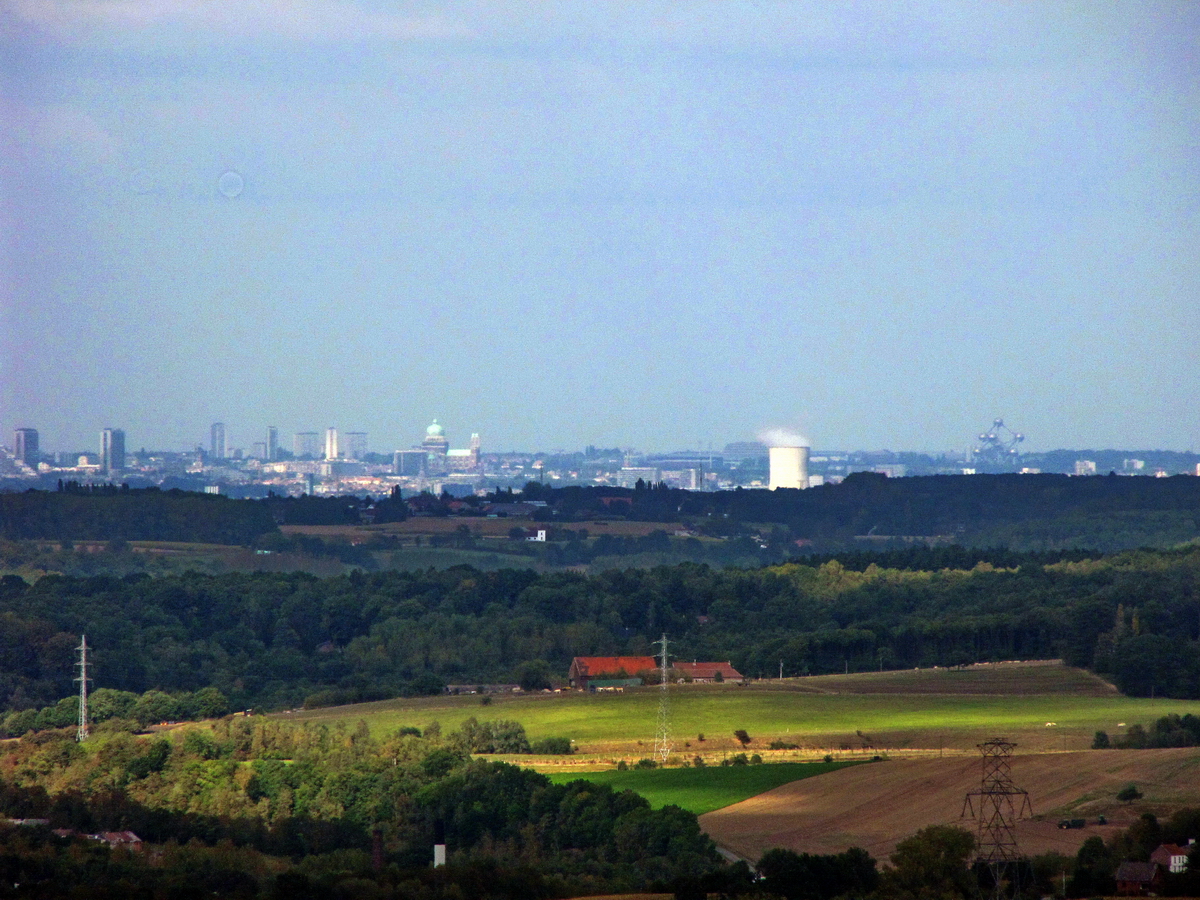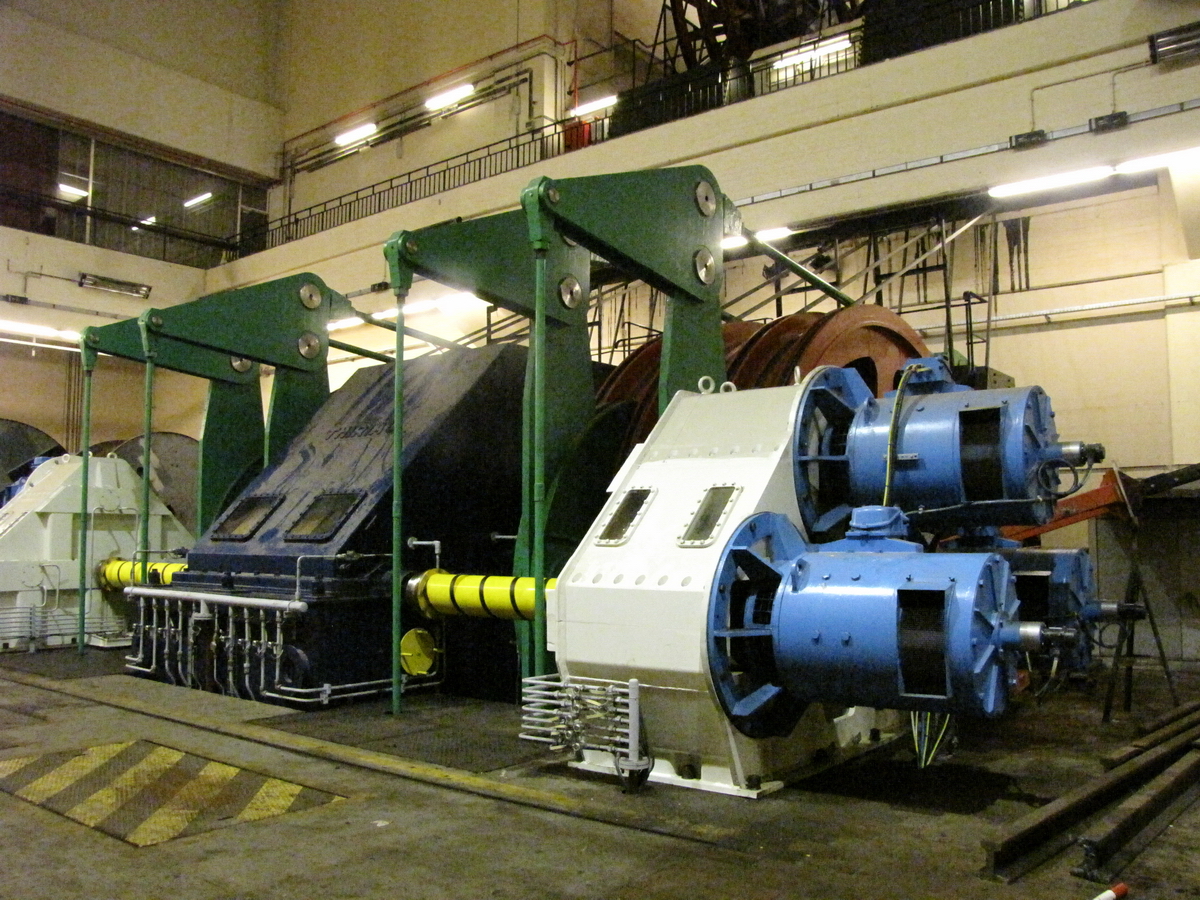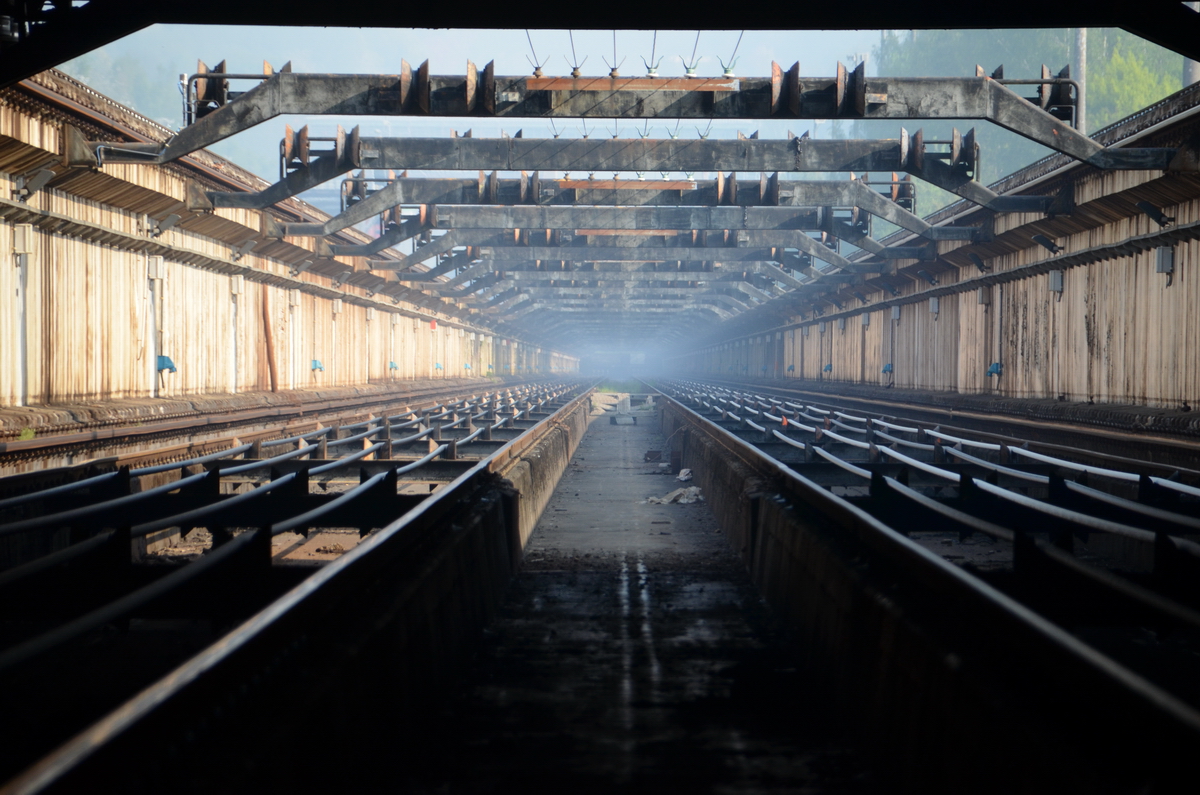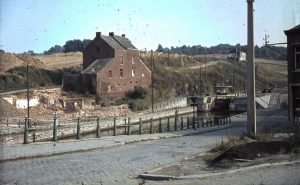Presentation |
Ronquieres boat lift, Ronquières inclined plane,Sloping Lock of Ronquières , Ronquieres bootlift, Ronquières hellend vlak, Hellende sluis van Ronquières | |
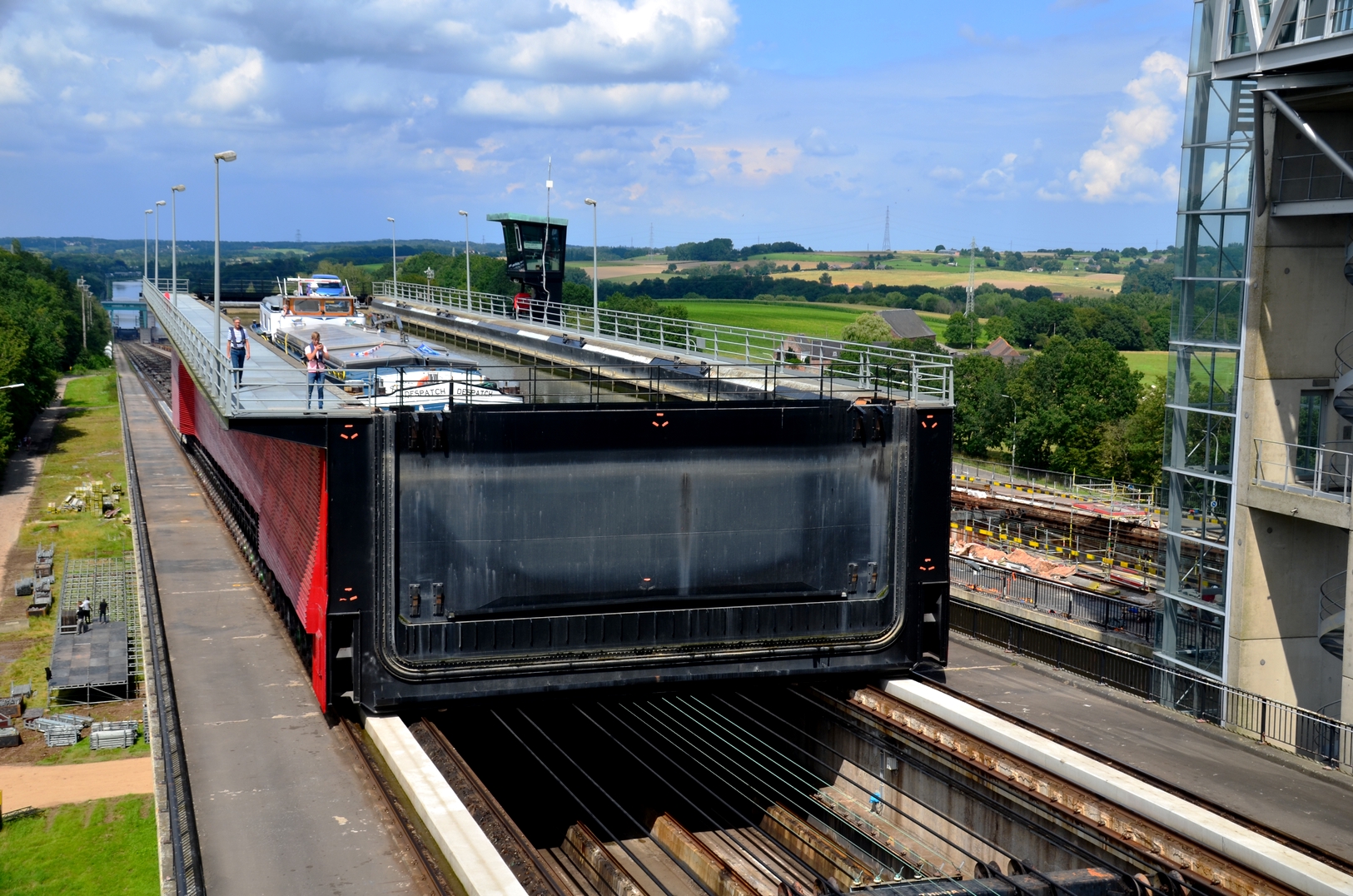
The inclined plane of Ronquières is a monumental structure built between 1960 and 1968 on the Charleroi Brussels Canal. Its construction was part of the general plan to modernize the canal to 1350 tons. As a book of the time puts it very well, here, “the boats go on wheels”. The Ronquières structure consists essentially of two metal tanks 91 meters long by 12 meters wide, containing water varying from 3 meters to 3.70 meters high, depending on the flotation of the upstream bay, and moving in the direction of their length. The bins end at each end with a movable door that opens when they come to stand against the terminal door of the upper or lower bay, thus leaving the passage to the boats. Each tank, whose weight in running order varies from 5200 to 5600 tons is balanced by a counterweight of 5300 tons. Each tank rests on 236 rollers that run on 4 running rails. 192 rollers and 4 rails support the counterweight that moves under the tank in a reinforced concrete hopper. The guidance of a tank is provided by 24 steering rollers and 2 guide rails, located on either side of the tank. Similarly, 24 steering rollers guide the counterweight. |
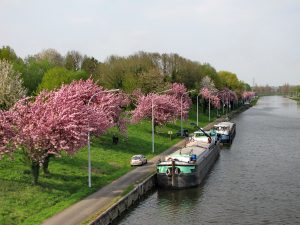
In spring |
|
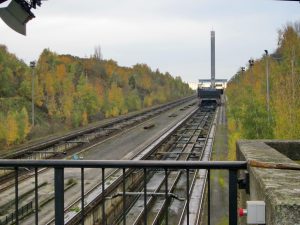
In Autumn |
||
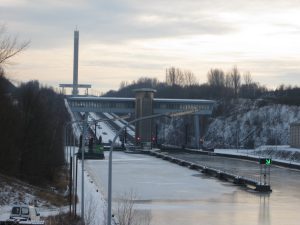
In winter |
||
In brief |
It is not necessary to register to browse this site freely. We are not interested in your identity. The navigation is completely anonymous. | |
The Bacs |
The tower |
Hoppers |
|
|
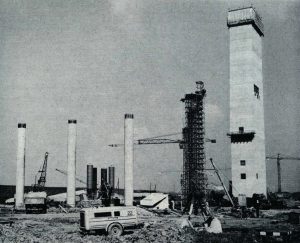 |
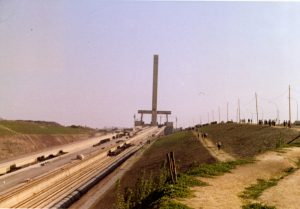 |
The Canal Bridge |
The Lock of Ittre |
The king in Ronquières |
|
|
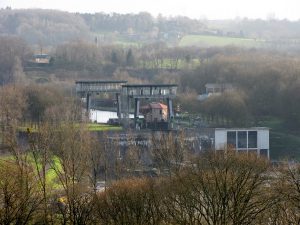 |
 |
History |
||
History of the village |
History of a construction site |
History of the canal |
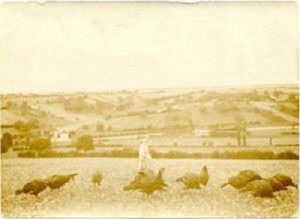 |
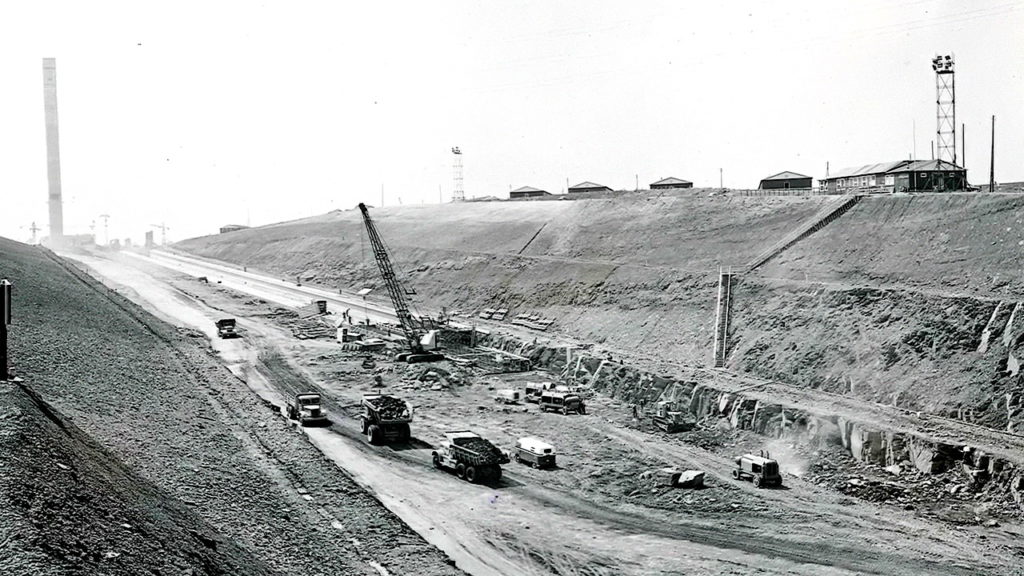 |
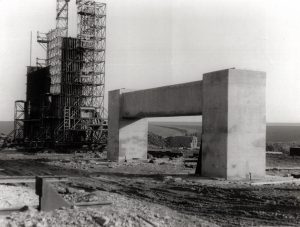 |
| The story of Ronquières was written by both Emile Landercy and Abbé Georges Malherbe | The pharaonic construction of Ronquières lasted from March 1961 to April 1968. | The current canal passing through Ronquières is the third canal built there since 1832 |
|
It was during the reign of Philip the Good, Duke During the sixteenth and seventeenth centuries canal projects were born: Charles V (1500-1558) The French saga of the Charleroi Canal in Brussels ended with Bonaparte’s views on the project, troubled by all the force he concentrated on a proudly expansionist foreign policy. |
||
Under construction |
In operation |
Dryed |
|
|
|
|
The construction of the inclined plane |
||
Earthworks |
Concreting |
Bins |
|
|
|
|
The Canal Bridge |
The downstream
|
The
|
|
|
|
|
The Lock of Ittre |
||
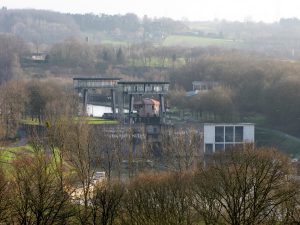 |
The Ittre lock is the highest in Built during the transformation of the canal that allowed the passage of barges of 1350 tons, the lock of Ittre has several peculiarities. It was built above ground, that is to say like a building. We first built a foundation on which we put the lock. It was only after that we let the water come in. So people had the impression of seeing a concrete building rise up before being confronted with the dam that we know today. It is the lock that redeems the biggest difference in level between two reaches in Belgium It is the only lock with a submersible gate, the downstream gate. It is therefore under water when the airlock is filled with water. |
|
The lock under construction |
The lock seen from the sky |
The lock in automn |
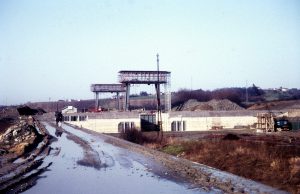 |
|
|
The works at the inclinated plan |
The works of the new 1350-ton canal |
|
|
|
||
In the region |
||
The Blue Forest |
The Old
|
The wood of la
|
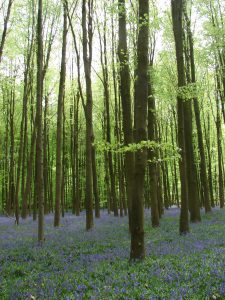 |
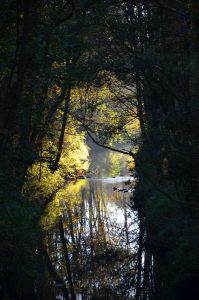 |
 |
| Nothing is more beautiful than the forest when it is adorned with some of its finest finery at the end of winter when, by the millions, the hyacinths of the woods spring through the carpet of fallen leaves. | The construction of the new 1300-ton canal sounded the death knell for the old canal that meandered along the valley of the Senne then the Sennette, the Samme and finally the Piéton. If there is nothing left of the old canals downstream of Ittre, there are still beautiful portions of the old canals between Seneffe and Ittre. | The wood of la Houssière occupies some 662 hectares on a five-kilometre-long hill between the villages of Henripont, Ronquières and Virginal. The ridge line, which rises to 163 meters above sea level, shares the watersheds of the Senne and its tributary, the Sennette. The valleys and ravines that cut it, especially on the steep slopes located on the edge of the forest perimeter, were formed either by sand pits or by streams born from the percolation of rainwater to the Ypresian clays through the thick layer of sand. |
Asquimpont |
Clabecq |
Fauquez |
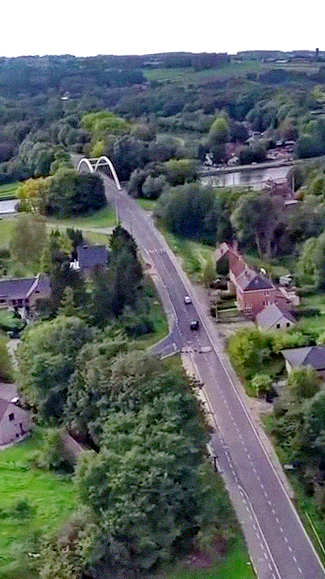 |
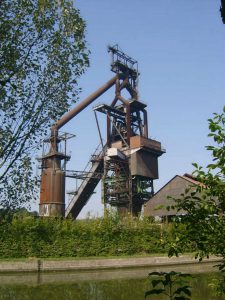 |
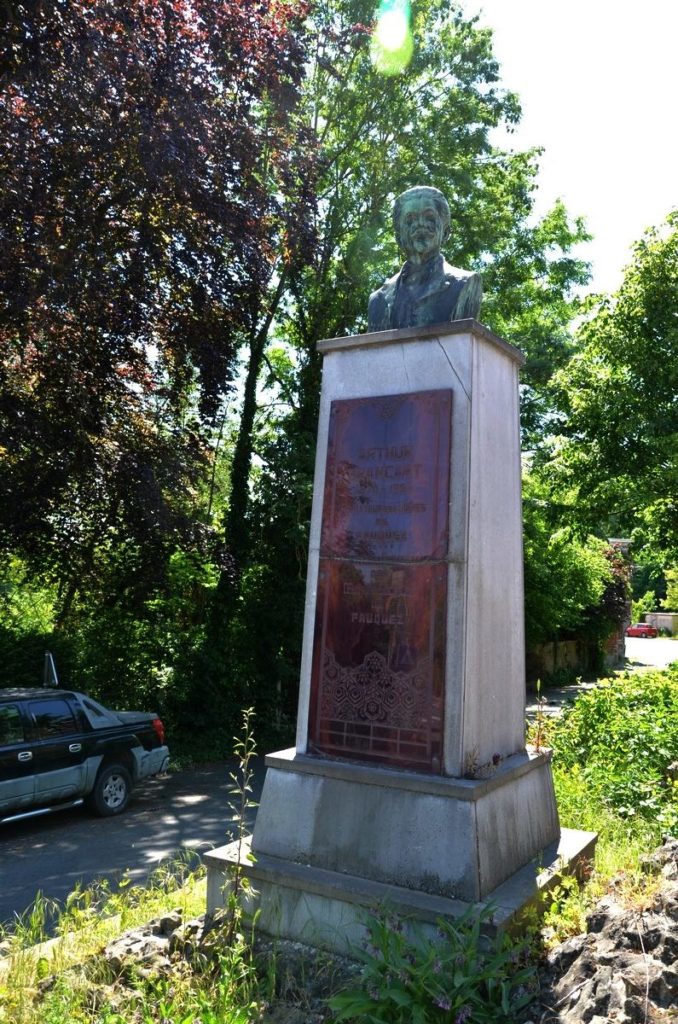 |
Henripont |
Virginal |
Oisquercq |
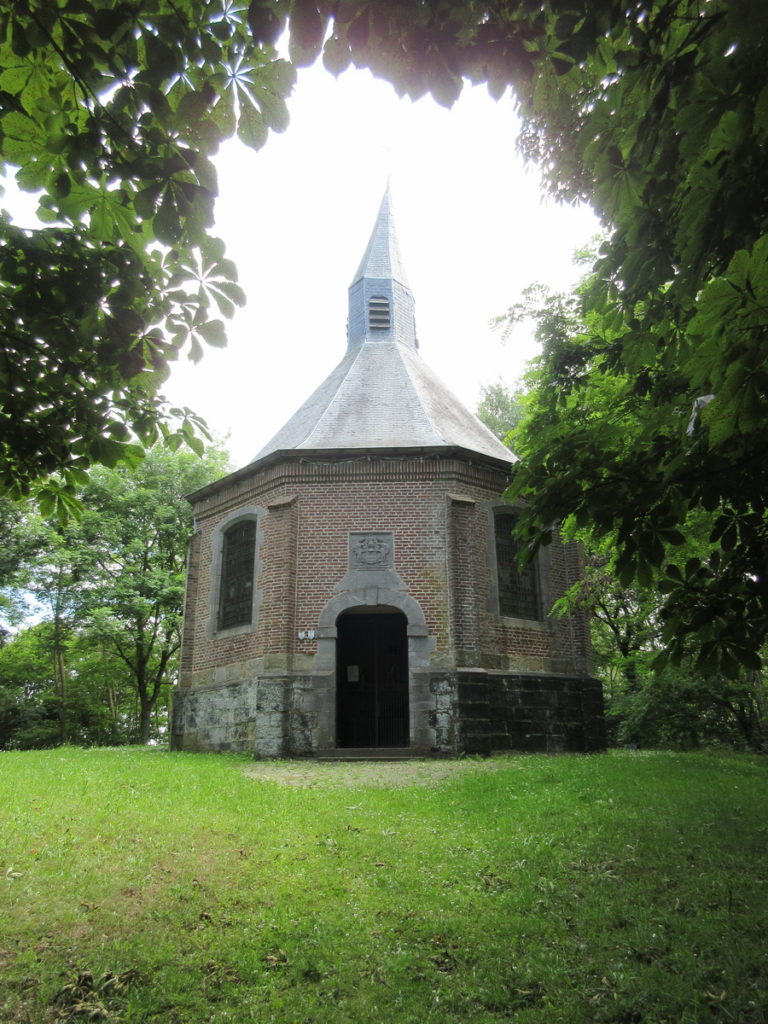 |
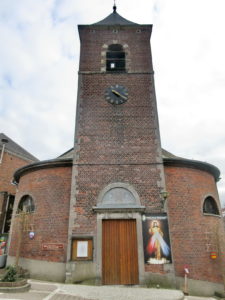 |
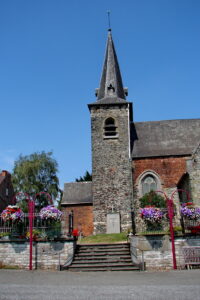 |
The flea market of May 1st |
Recent publications |
The construction sites of the 1950s and 1960s |
 |
|
If it was the most spectacular, the Ronquières shipyard was not the only one in the region. From 1950 until 1968, the Charleroi Brussels Canal area was dotted with construction sites that profoundly changed the landscape. |
Dawn |
Twilight |
At night |
 |
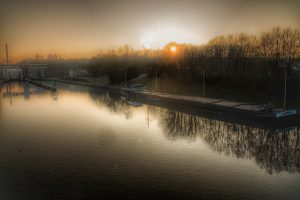 |
 |
| Our thanks to the 11 visitors of the day. | ||
www.ronquieres.org
Le site consacré exclusivement au plan incliné de Ronquières
